| Last update Apr. 29th. 2014 | Balance spring Vibrating Tool |
|
Used to vibrate a new balance spring and match it to
the balance wheel. This particular one was set in factory for 18000 BPH i.e. 18000 half vibrations per hour. Some of the tools similar to this one are adjustable for different beats per hour. Other tools, like this one, are supplied with several reference balance wheels each mounted in its platform. Swapping the platform in the tool allows vibrating balance springs to different BPH. Most commonly used BPH, besides 18000 are 19200, 21600 and 28800. |
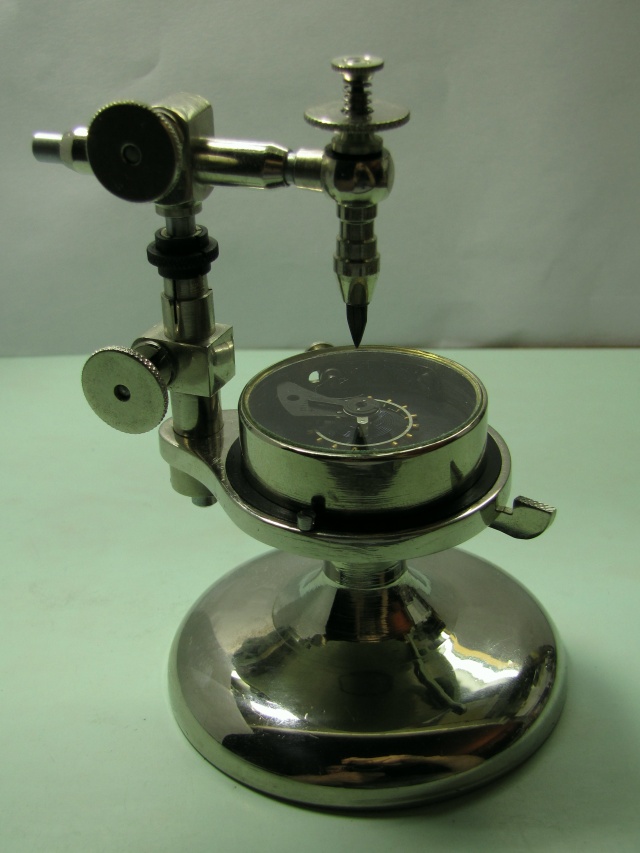
|
| Image
of the same tool showing the balance wheel with the balance spring
mounted on it, clamped by the tool's tweezers and in process of
vibrating. Vibrating the balance spring is accomplished by simple trial and error procedure in order to determine the correct length of the spring, i.e. the point which in the end will be between the two regulator pins. The correct point is reached when both balances rotate in unison with each other, the reference balance and the balance under test. One should leave about half a coil extra of spring length to allow affixing the stud, the excess length is cut off. |
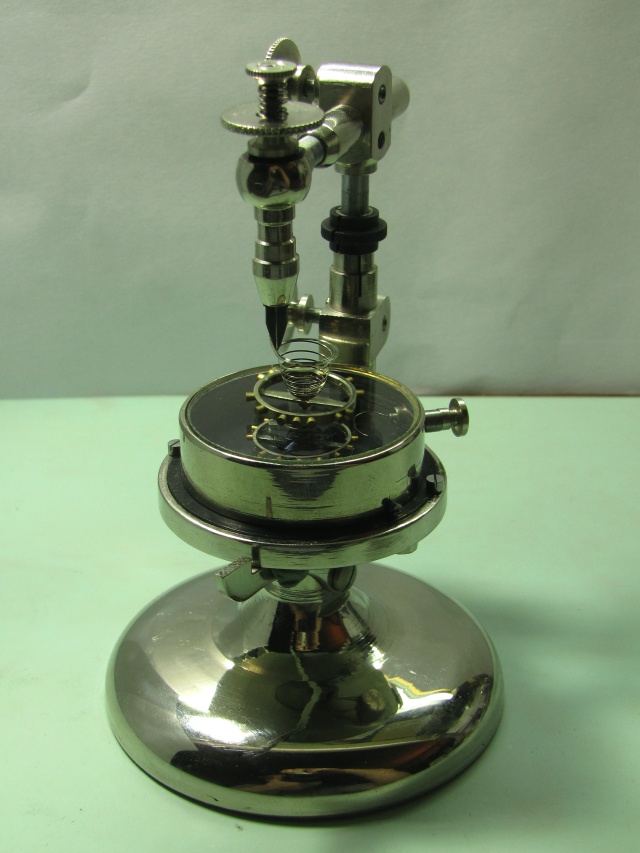 |
| top | |
| Balance Spring Stud Table | |
| Balance Spring Stud Table is a small bench tool used to hold stud firmly when affixing balance spring with a tapered brass pin. |
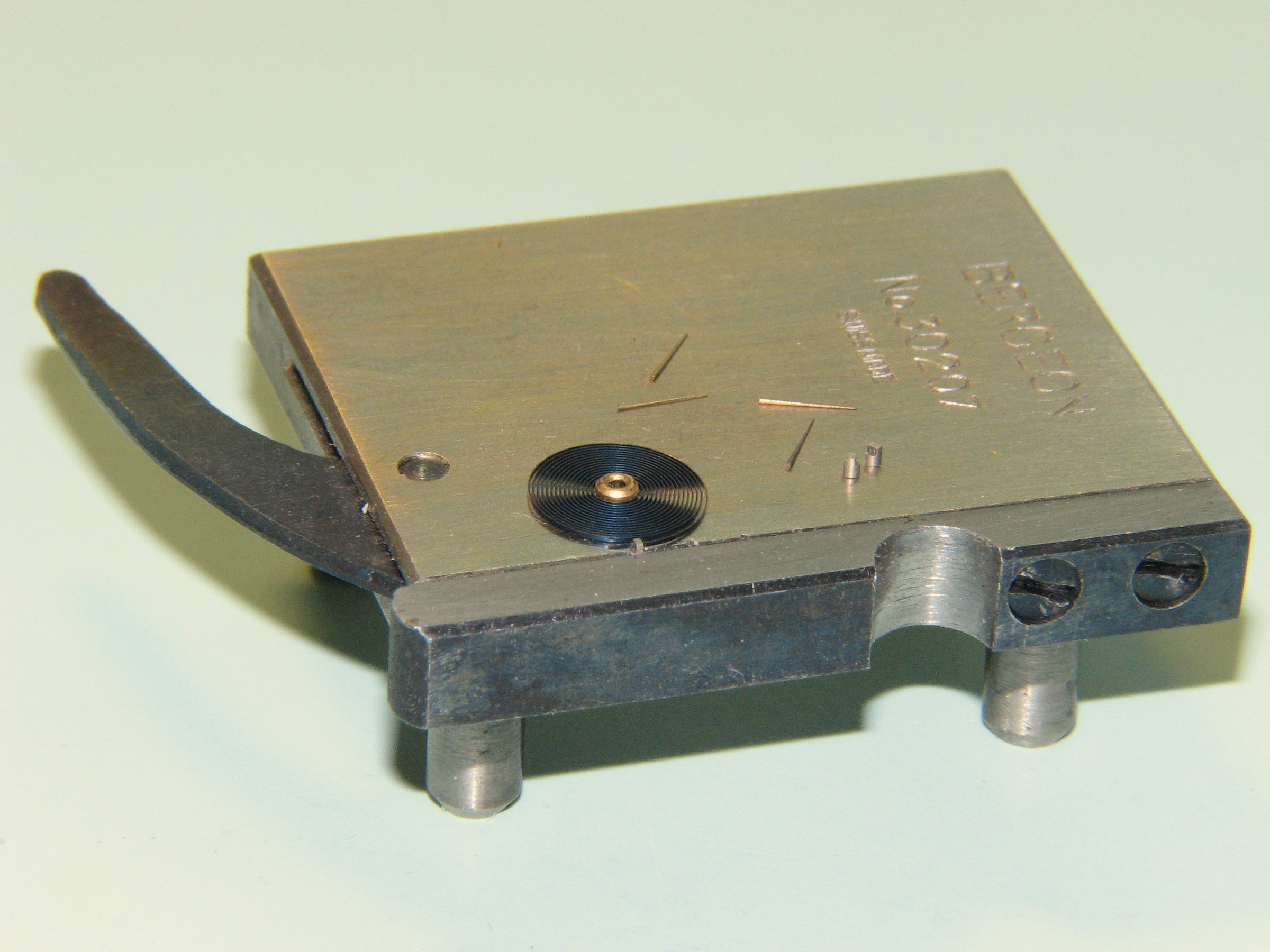
|
| Here is a detail showing already vibrated spring cut to the necessary length about to be pinned with a tapered brass pin to a stud. | 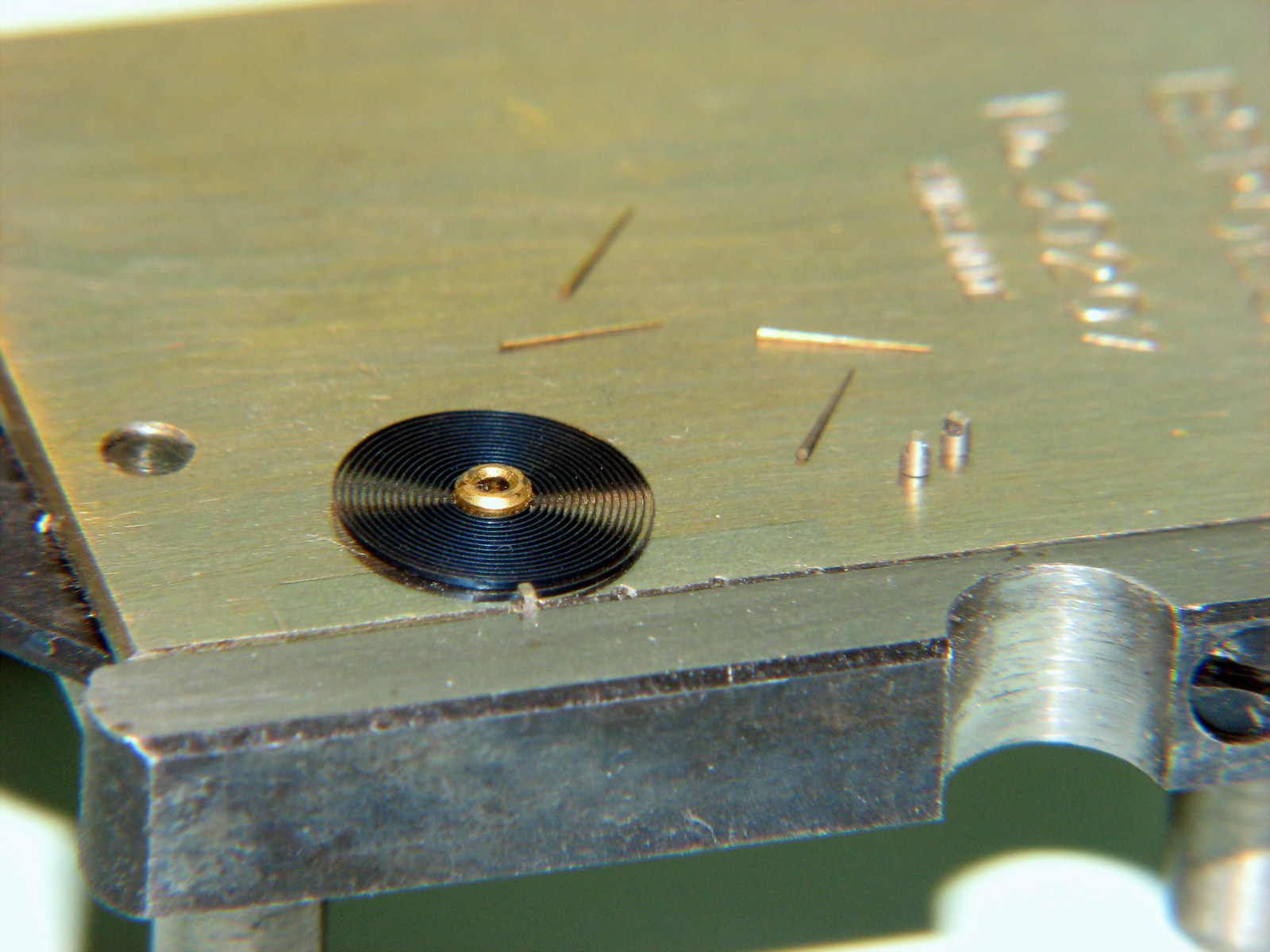 |
| top | |
| Balance spring trueing tool | |
| Used to hold balance spring while colleted and trued in flat and round. The two differ only in a diameter of taper, one to take collets with smaller diameter and the other with larger. | 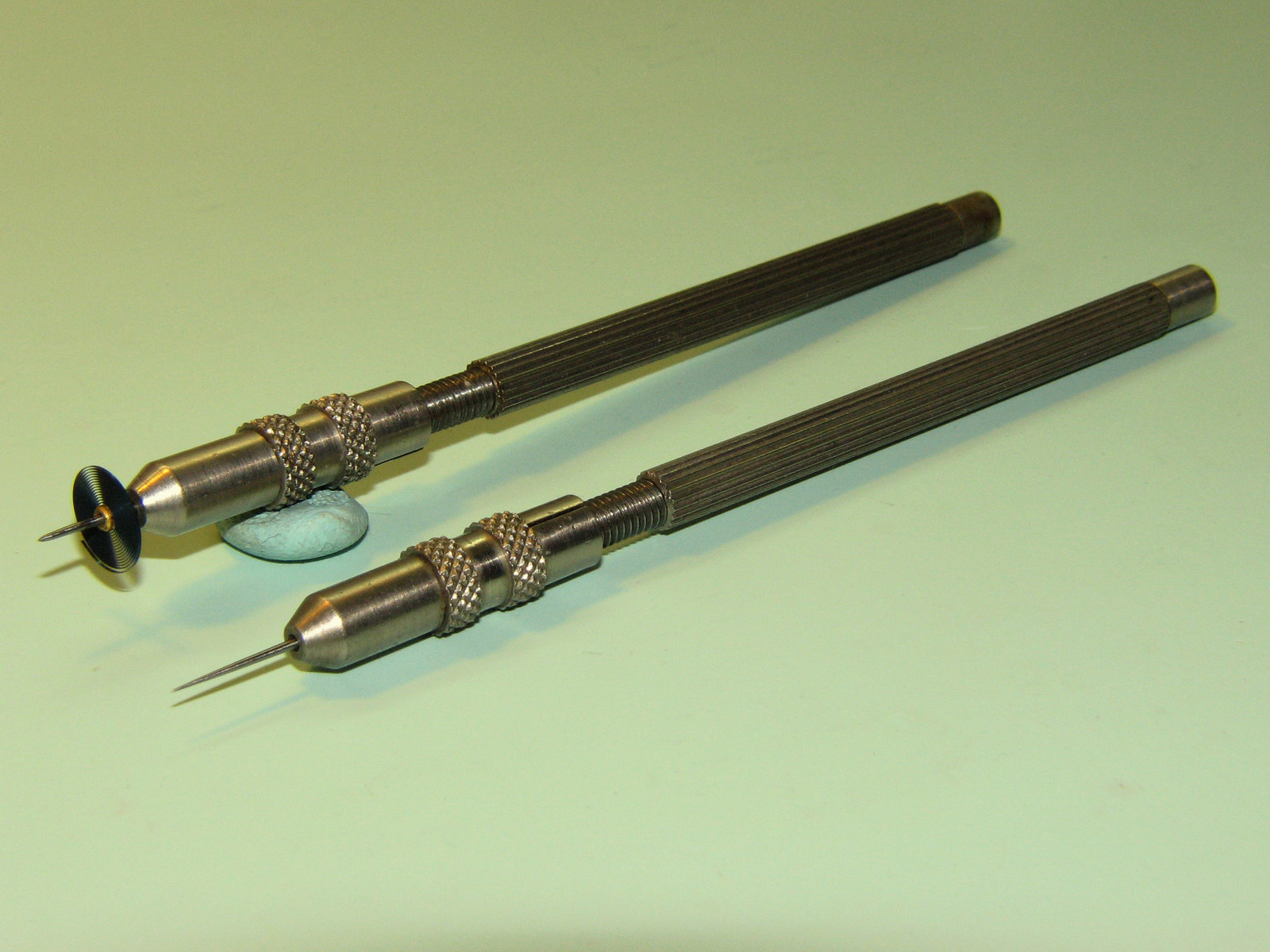 |
| The same tools shown close up, one with a colleted balance spring mounted and ready for trueing. | 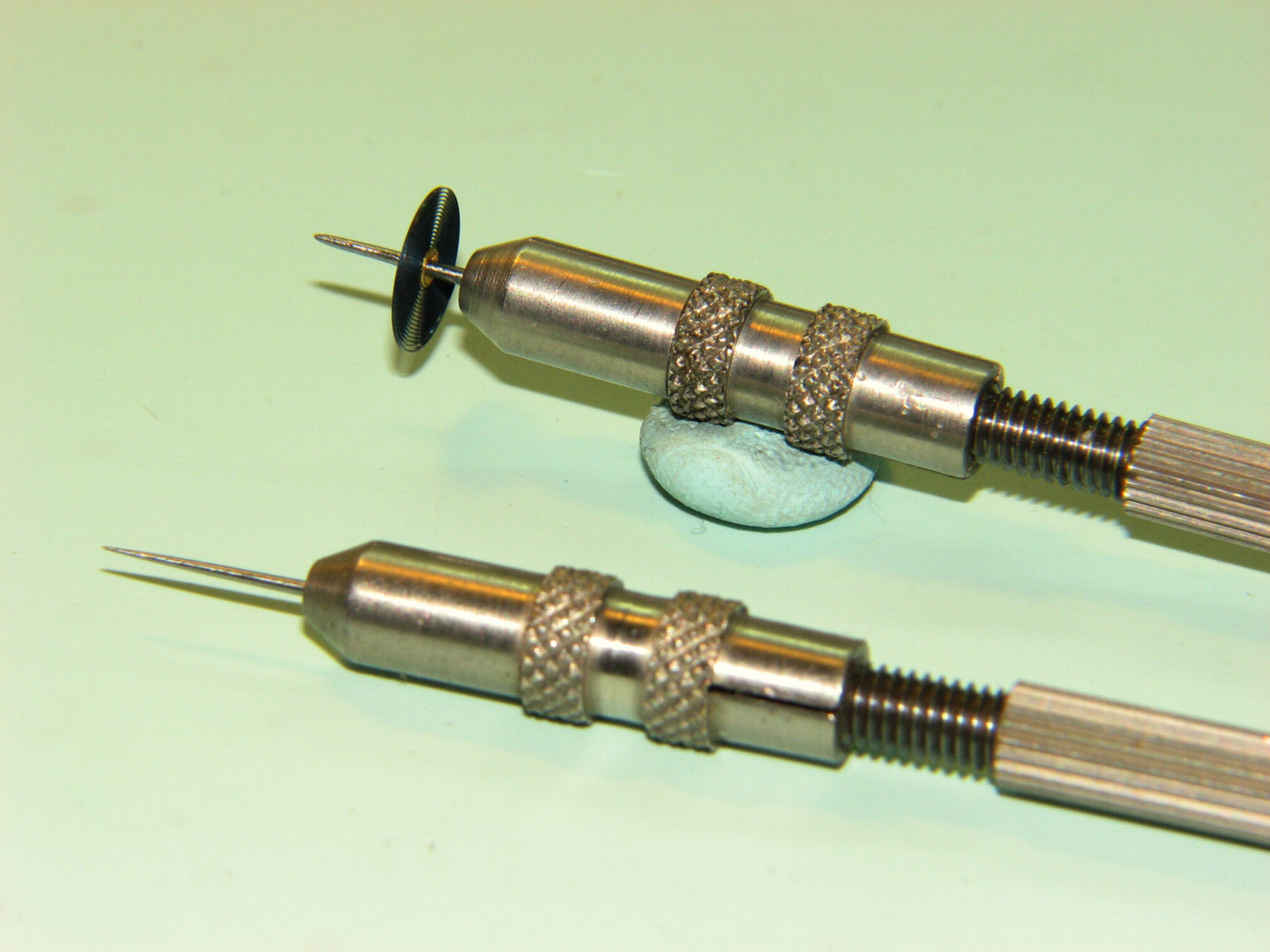 |
| top | |
| Balance Tack | |
| Image shows use of the balance tack. A handy bench tool when one needs to manipulate balance wheel without removing it from the balance cock. | 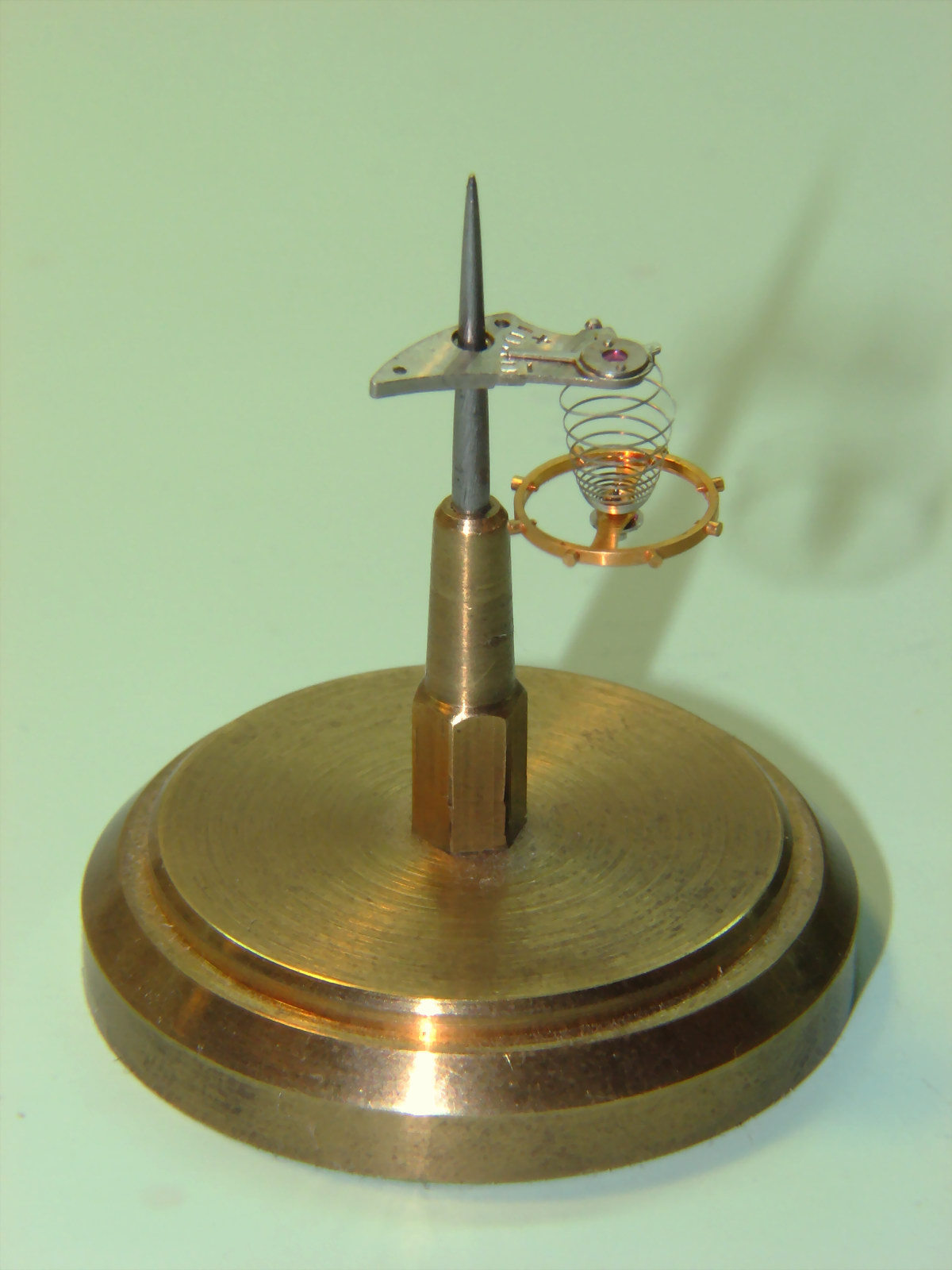 |
| top | |
| Balance Wheel Table | |
| Used to support balance complete when working with the balance removed from the balance cock. | 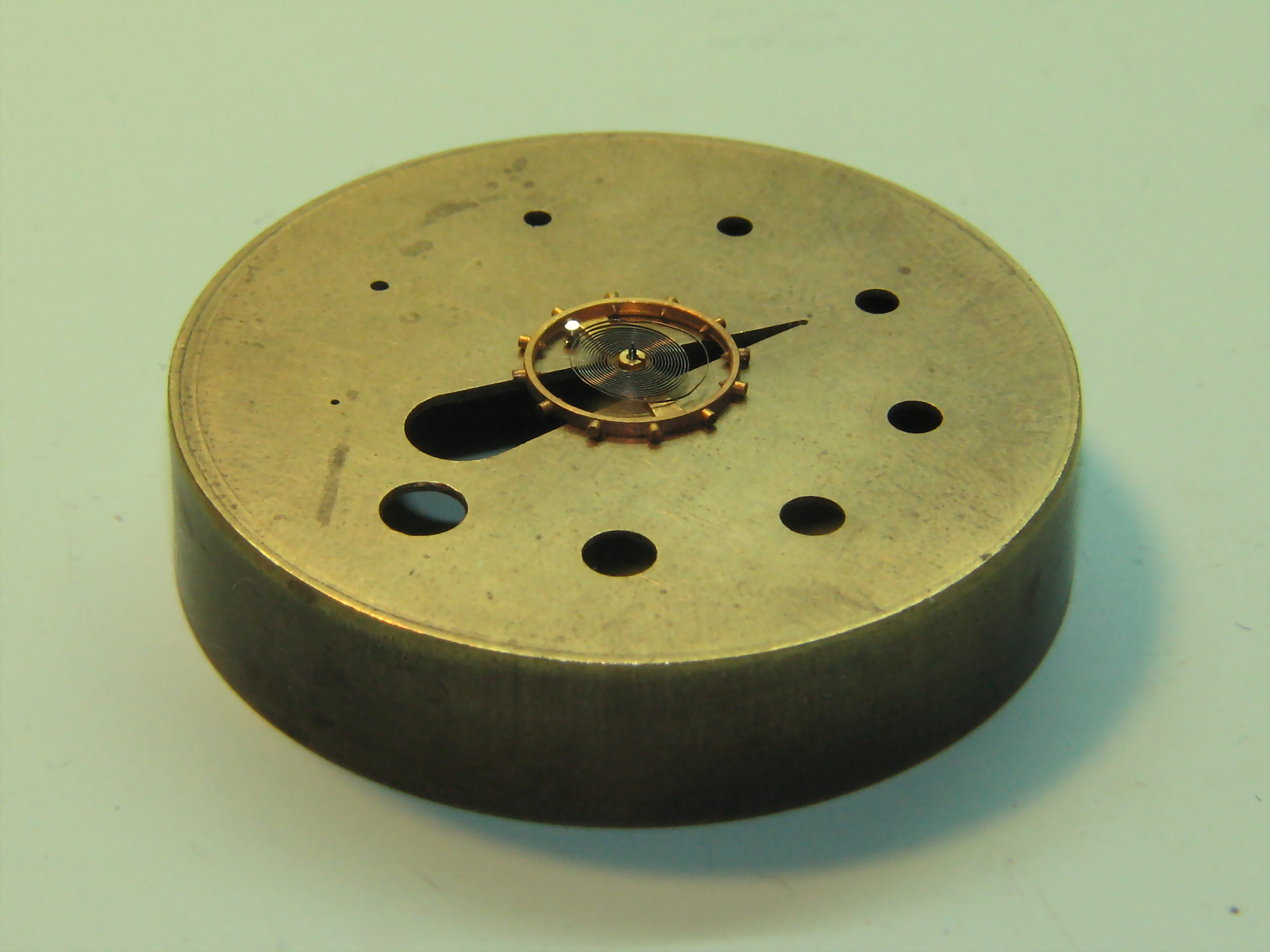 |
| top | |
| Balance spring table | |
| Used to manipulate colleted balance spring. | 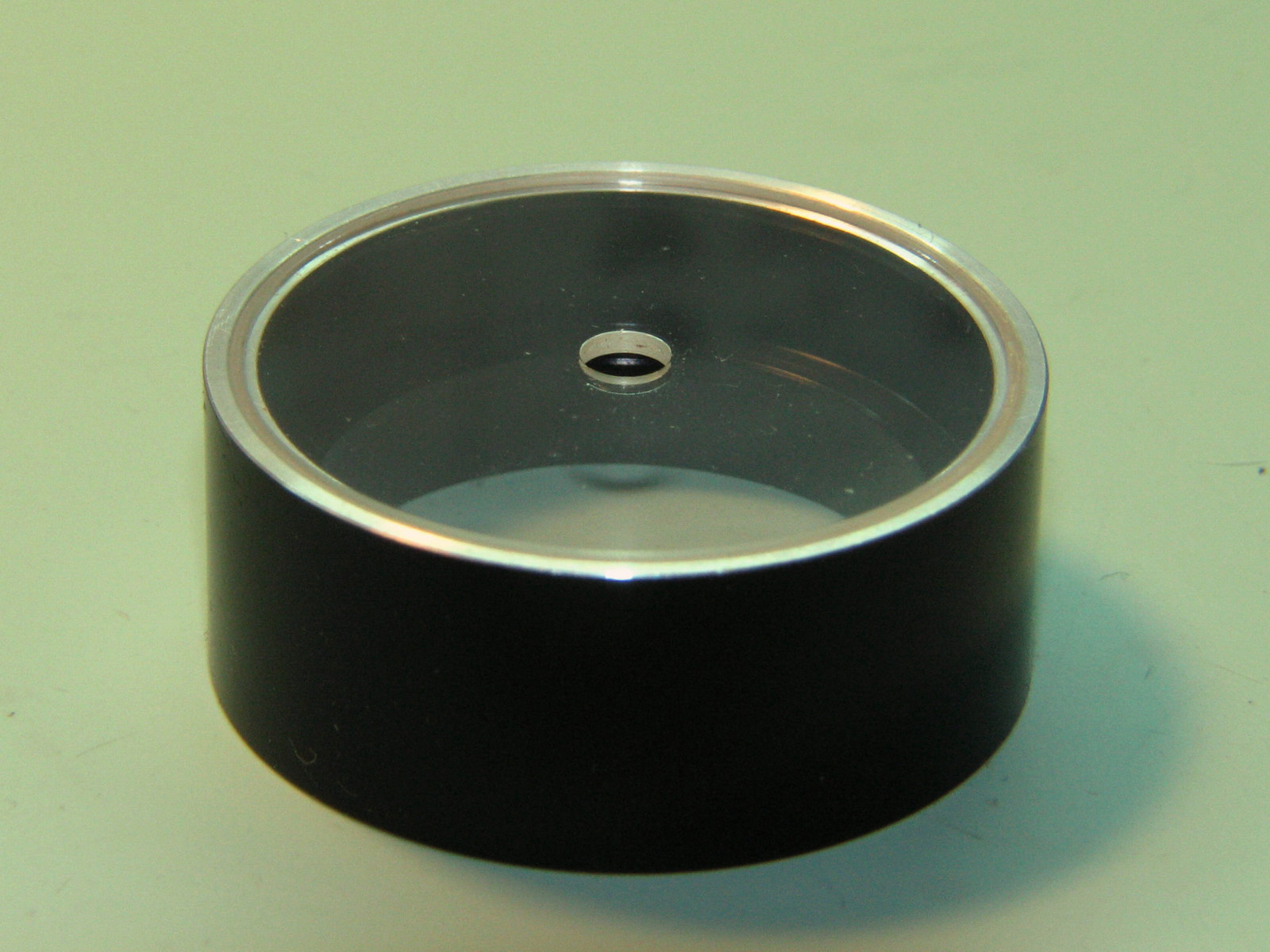 |
| Balance spring table shown with balance spring on it ready for forming outside coil. | 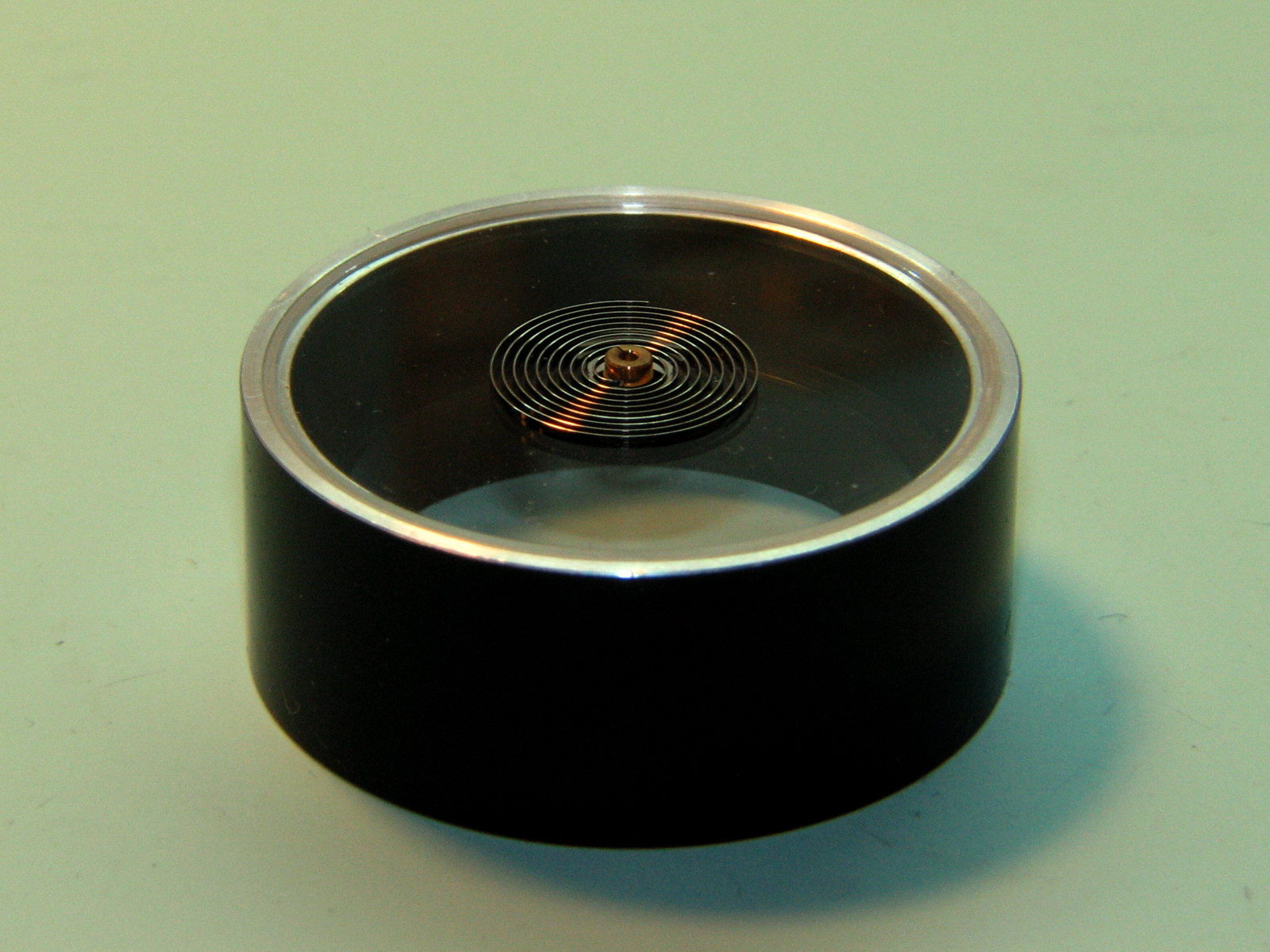 |
| top | |
| Trueing Callipers | |
| One should take
care in recognising two types of female centres used on trueing
callipers. Image shows two types, the ordinary on the left and safety centre on the right. Some centres are jewelled in order to provide the best replication of the actual working condition. |
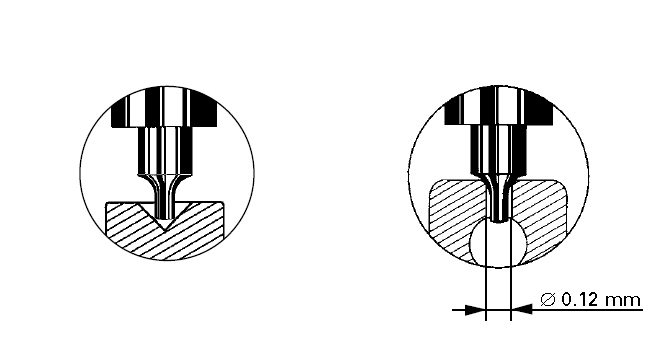 |
|
Levin lyre style trueing callipers with safety centres. Used to true the balance wheel in round and in flat. There are many different styles of the tool, made by as many different makers. |
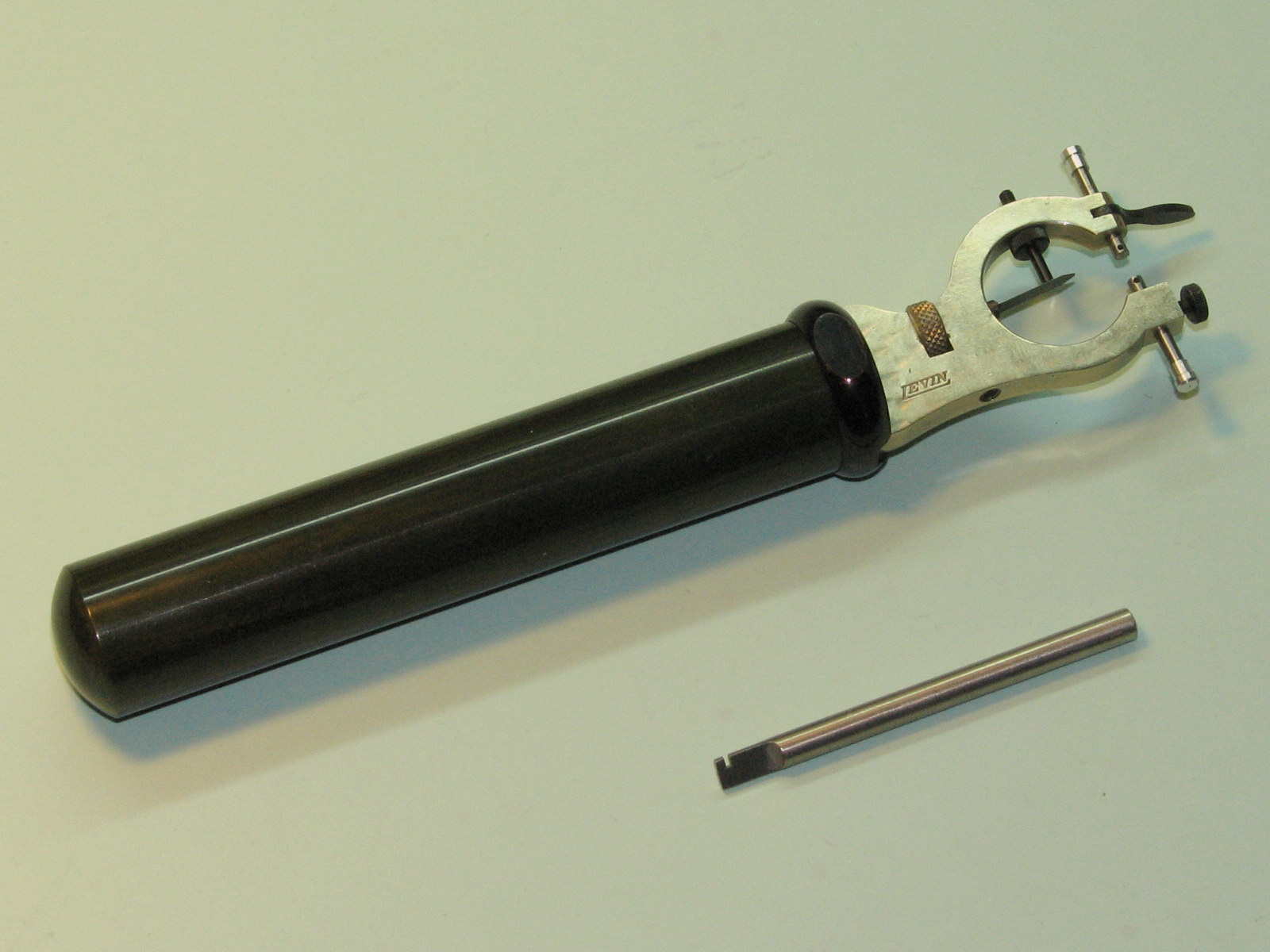 |
| The same tool shown close up. | 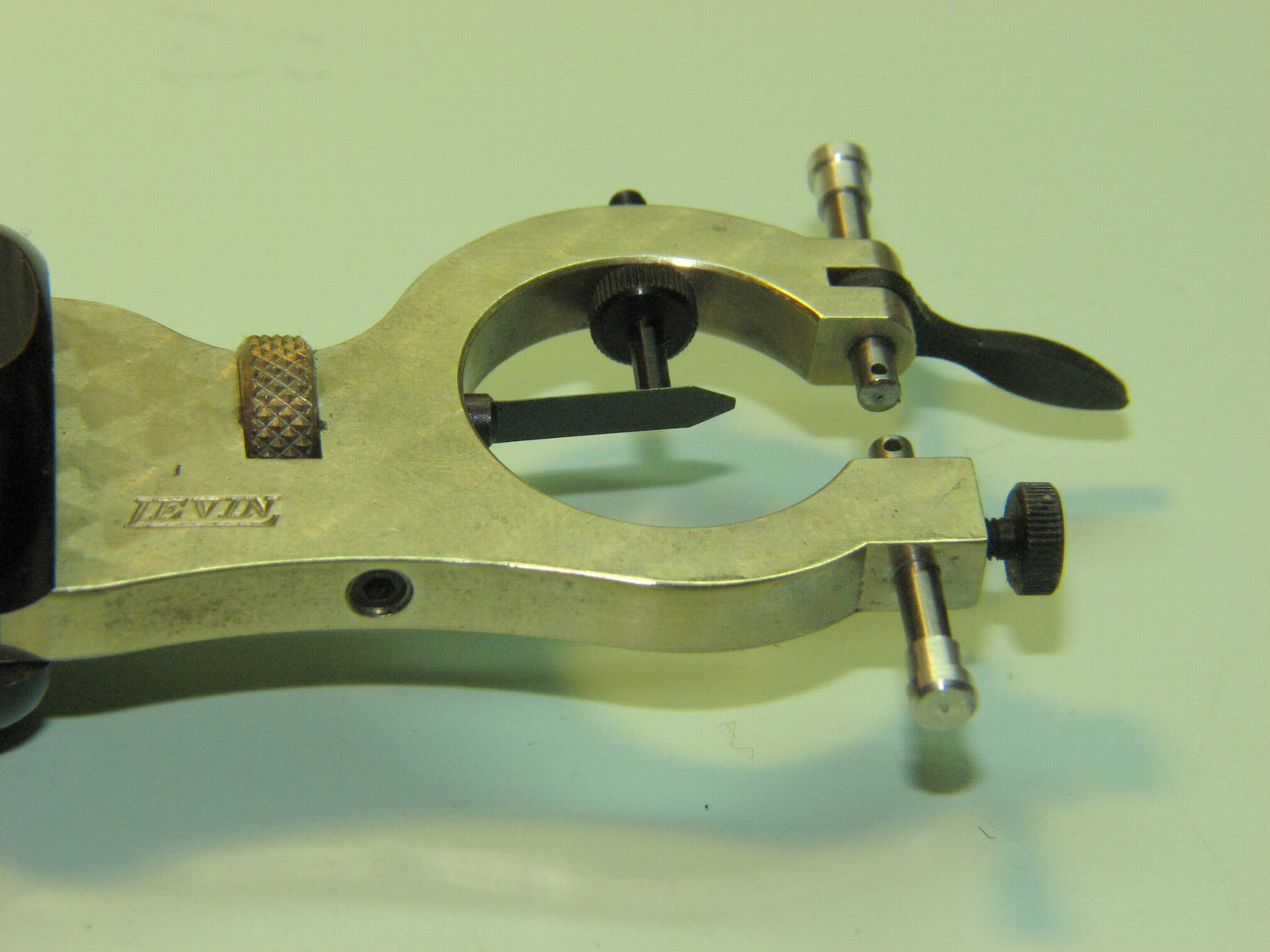 |
| Image on the right shows parallel action safety trueing callipers of the larger size intended for use with balance wheels of the pocket watch size. | 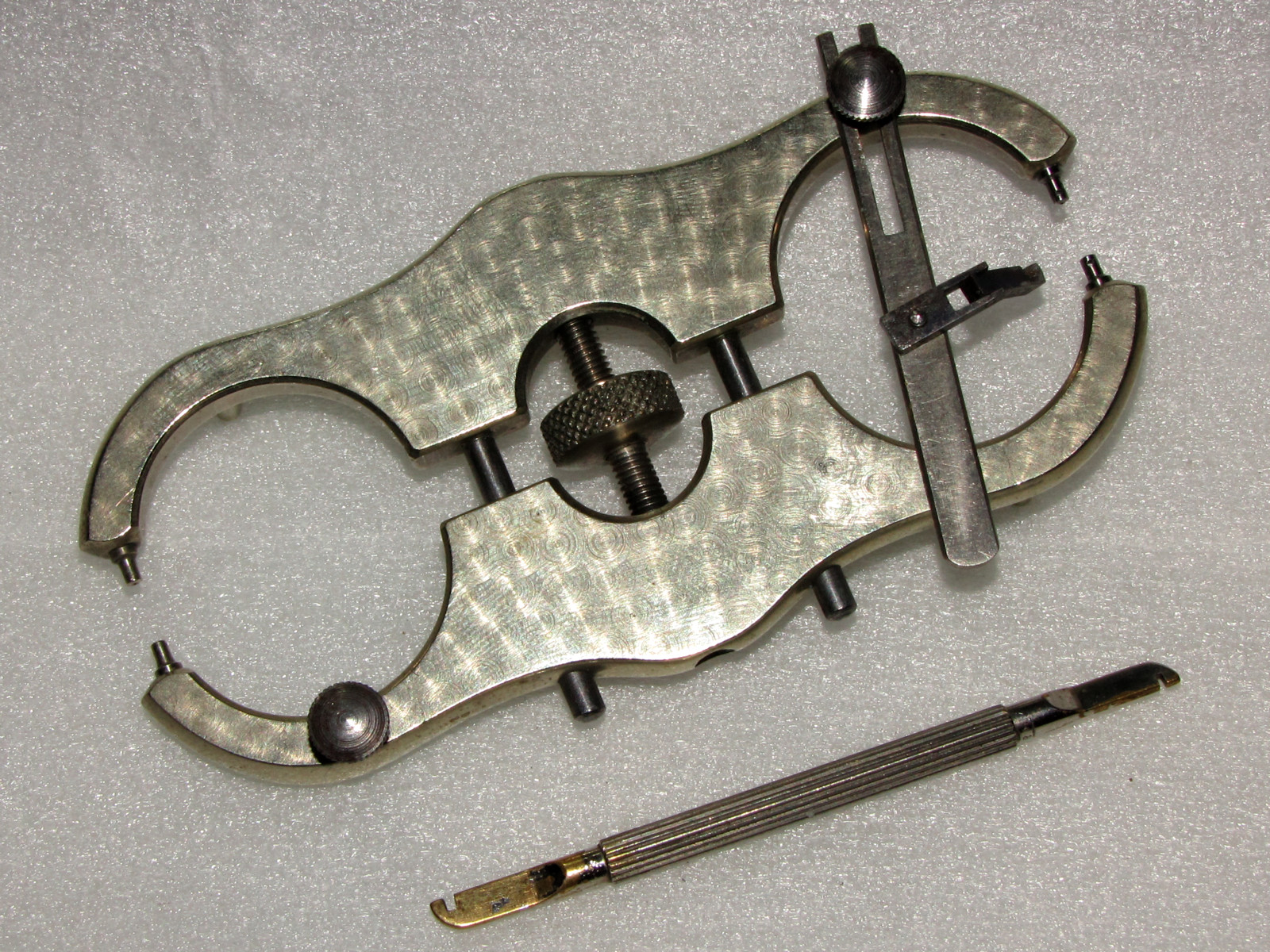 |
| Here we have the same type of parallel action safety trueing callipers for use with balance wheels of wrist watch size. | 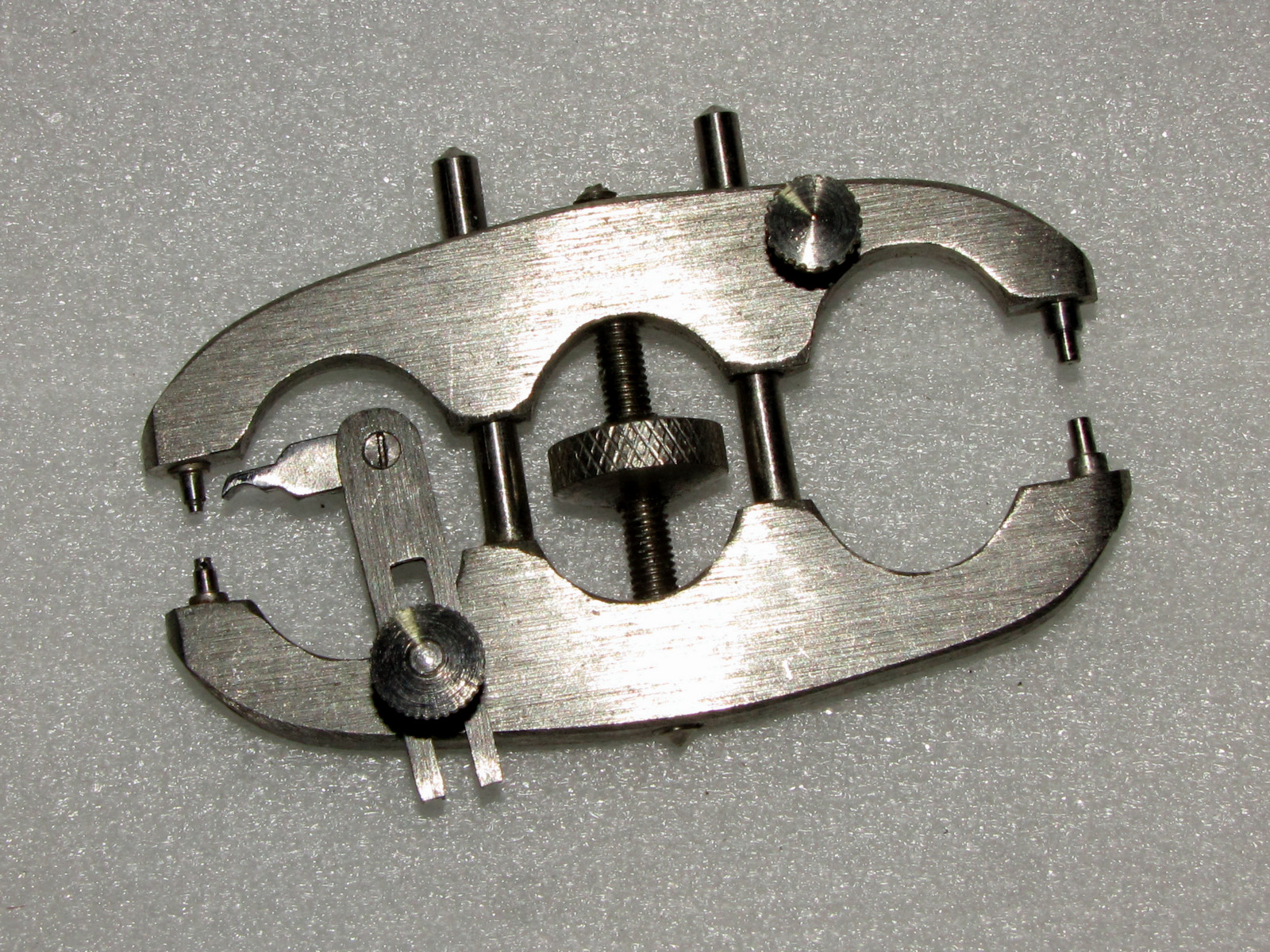 |
| Here we have the very old style of trueing callipers intended for use with all size balance wheels. | 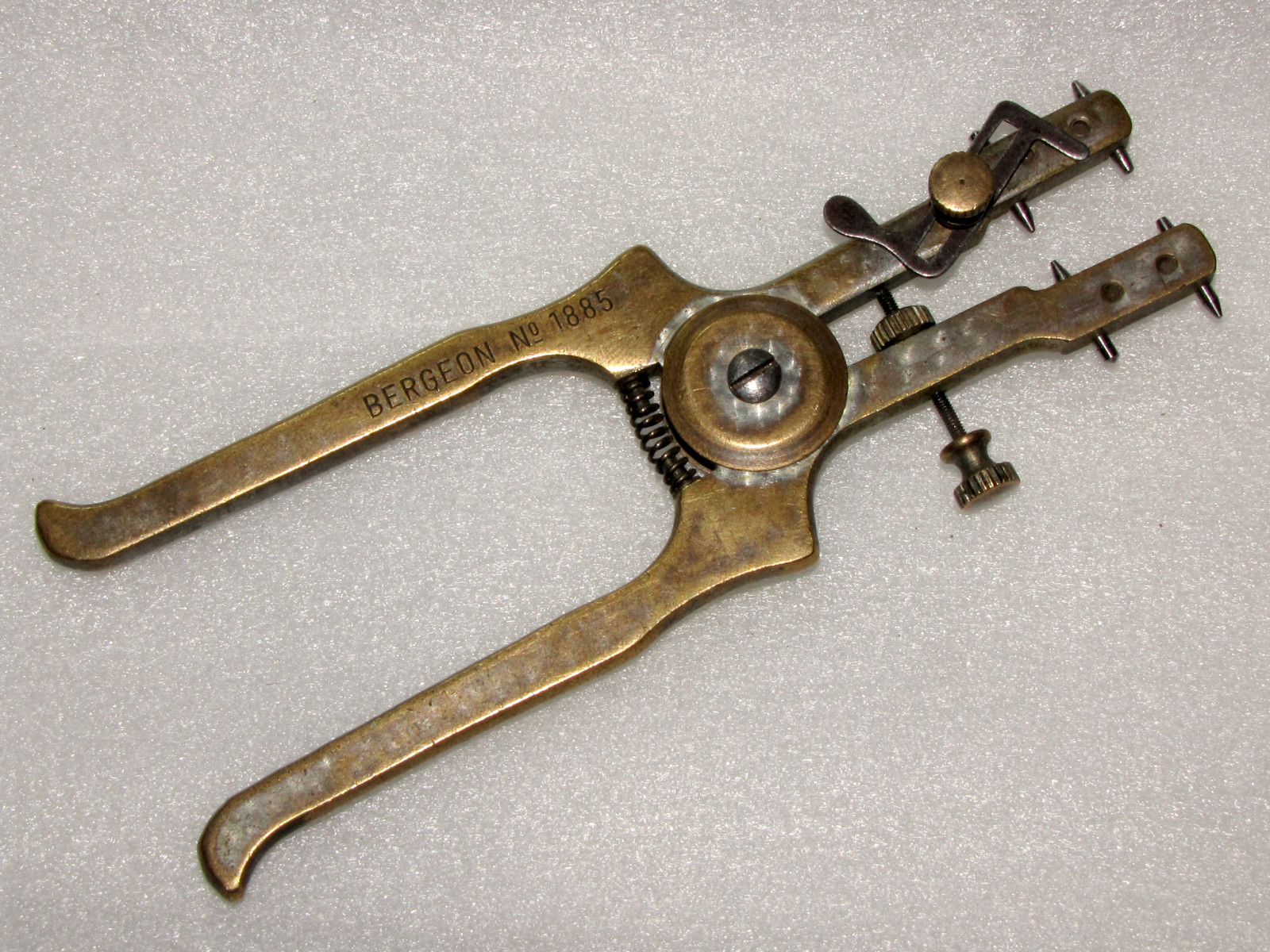 |
| And for illustration only, here is an even older traditional style trueing callipers, one of many different designs. | 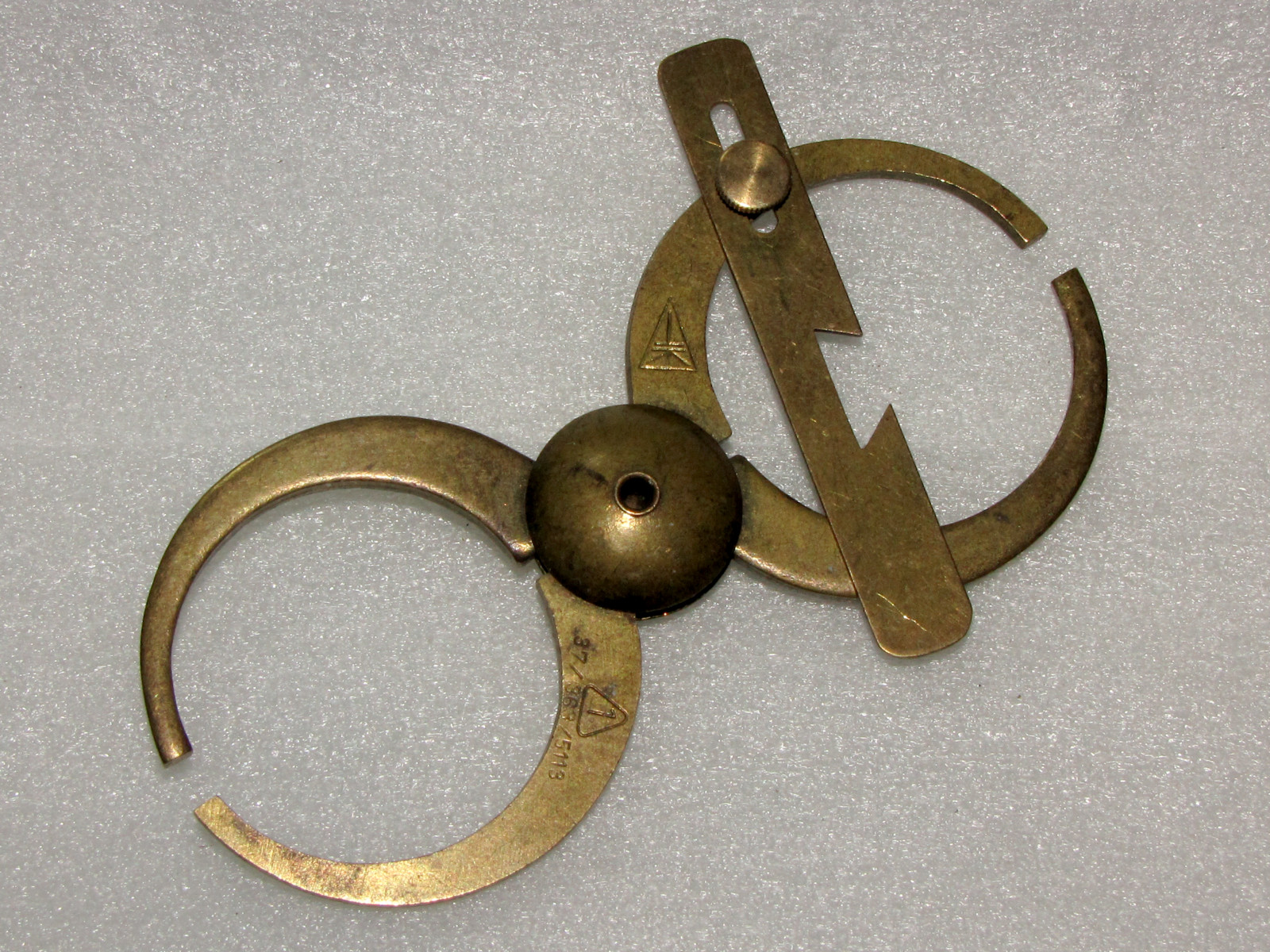 |
| top | |
| Balance Spring Collet Press | |
| Used to slightly reduce diameter of the balance spring collet so
that it will sit tightly on the balance staff. Secondary use is to firmly hold balance spring collet to enable reaming it to the necessary size instead of opening it. |
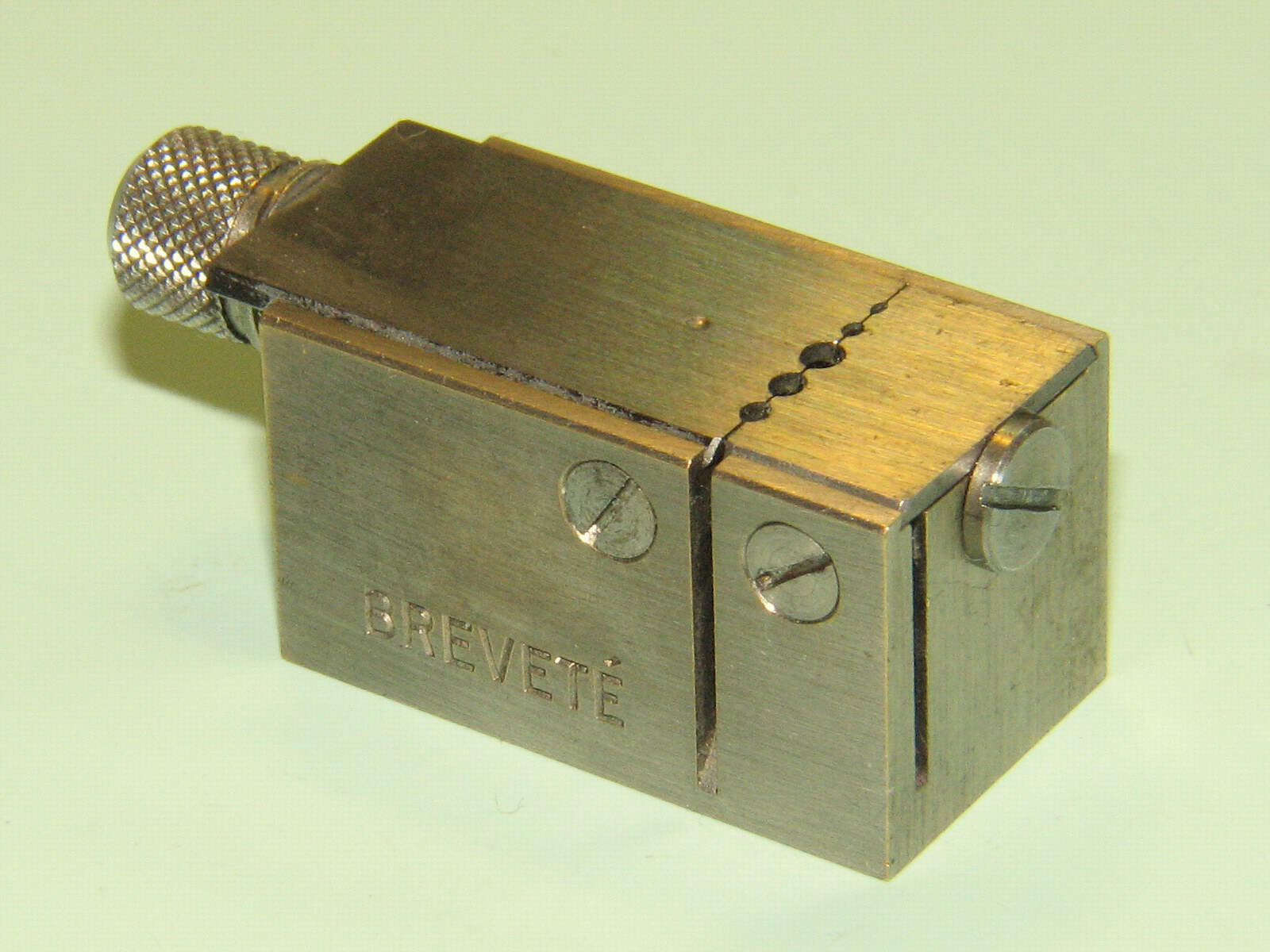 |
| Image showing the press in use. | 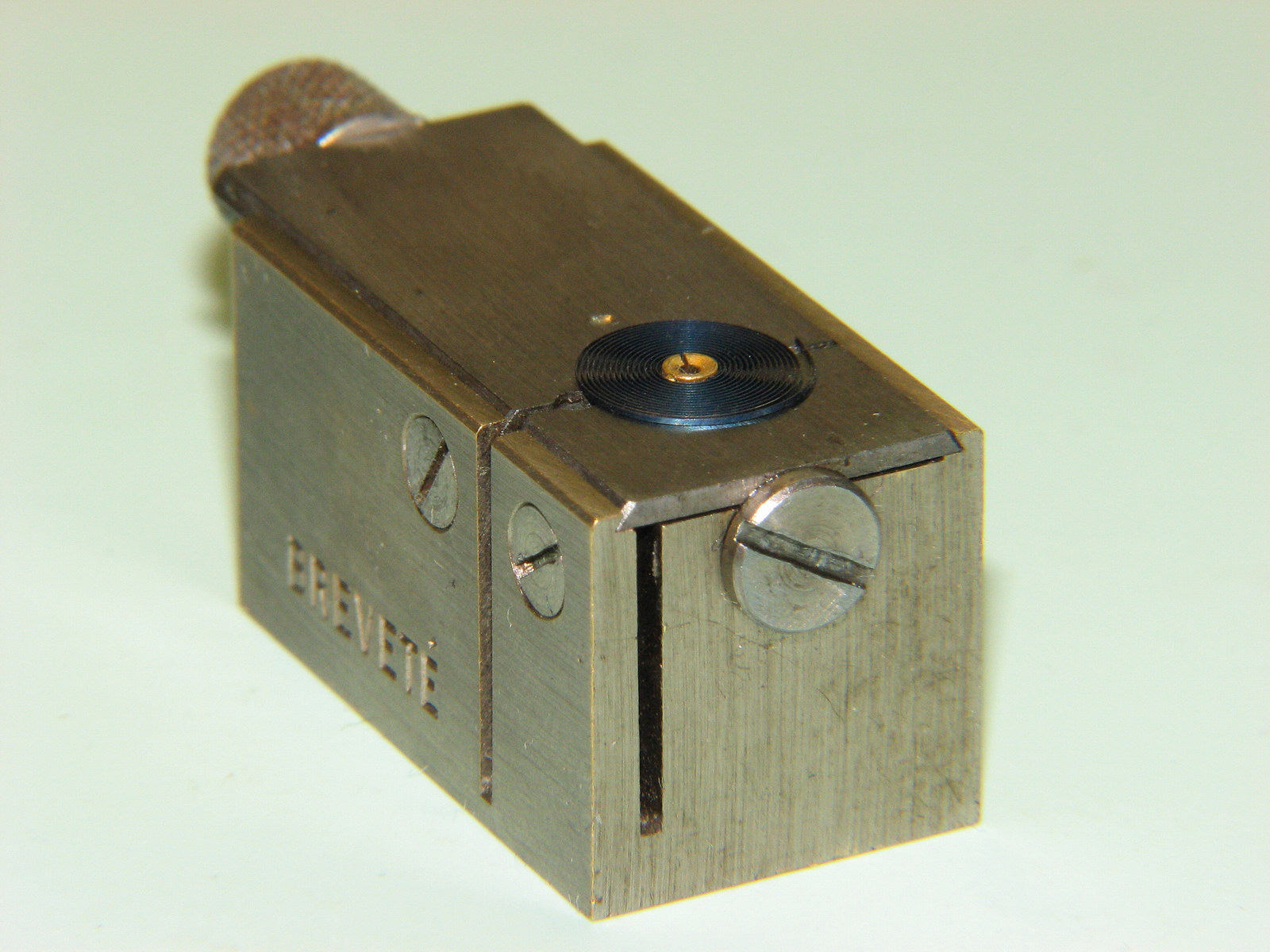 |
| top | |
| Tweezers | |
|
Of course, without tweezers watchmakers could not be able to
accomplish much.
It is even more valid statement if we are considering work with balance springs. Such a delicate work demands very special types of tweezers. Some are very delicate and can only be used for springing. |
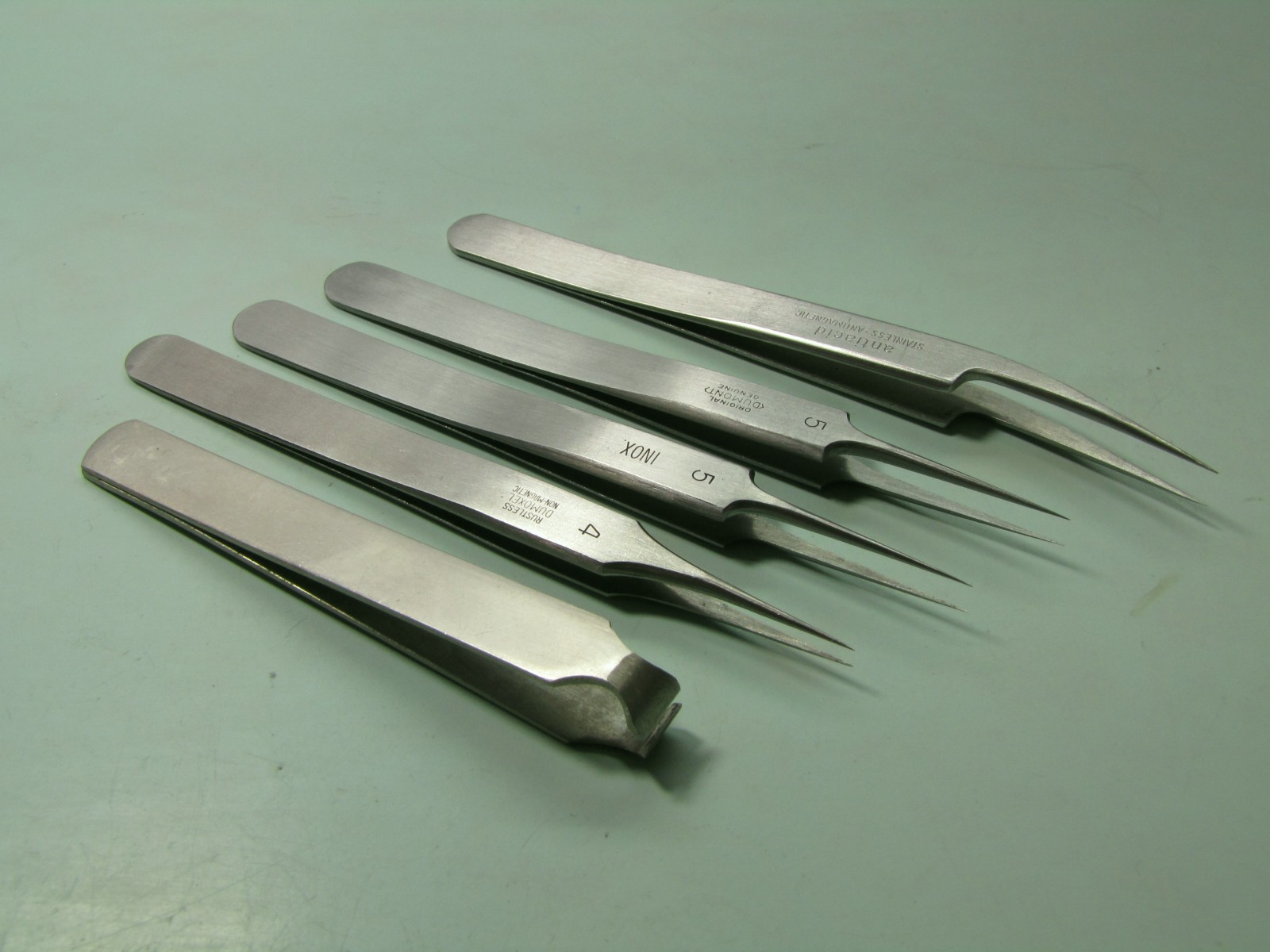 |
| As it can be seen at the image, some of the springing tweezers are so narrowly specialised that they are unusable for any other work. |
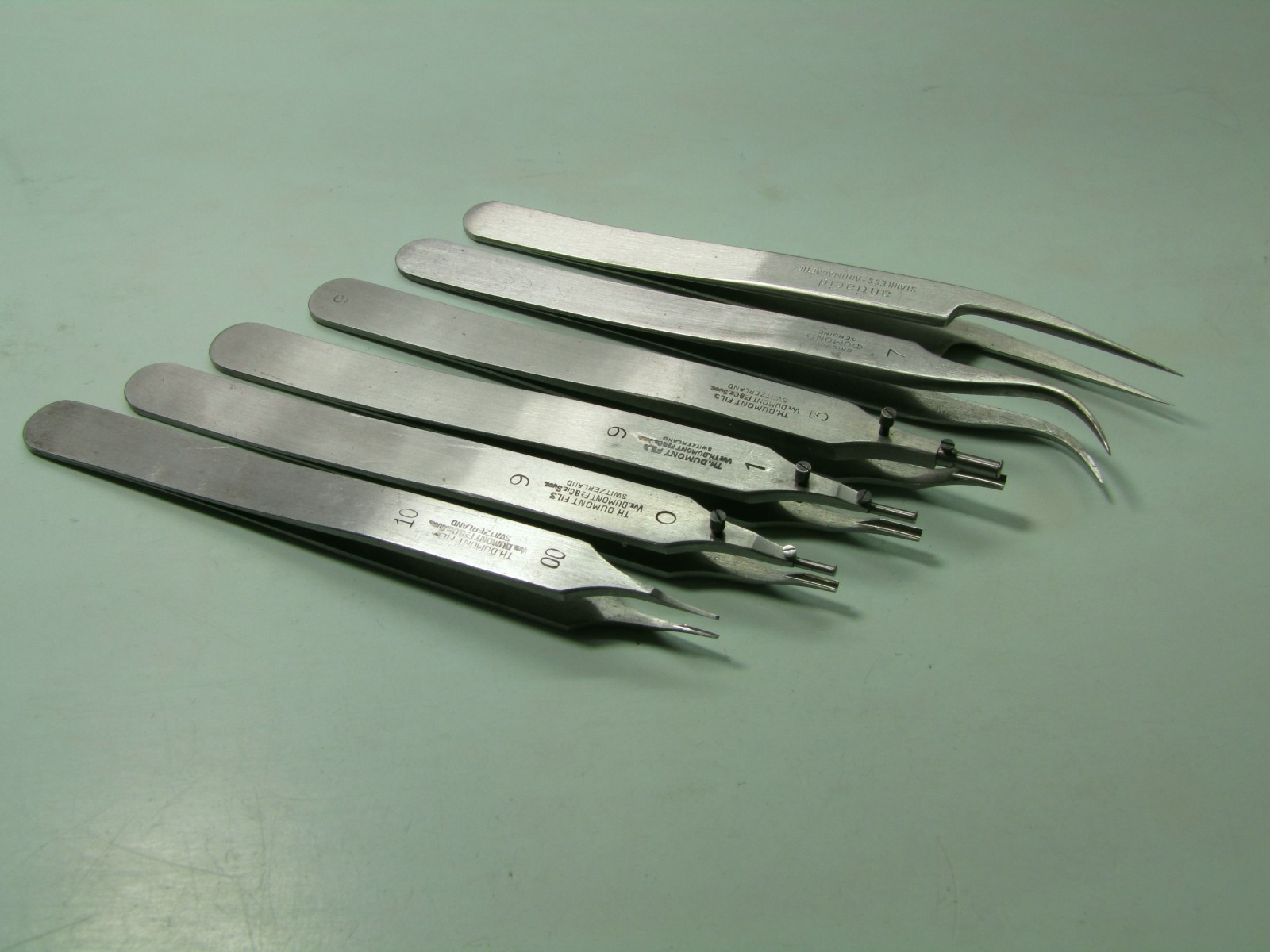
|
| Not
to forget to mention various general purpose tweezers, which are many. Some for manipulating movement parts, counting components, strong tipped, fine tipped, stubby, extra strong tipped, cutting, hands removing etc. Believe it or not, but there must be several dozen of different tweezers laid in the bench drawers, which watchmakers use each day. |
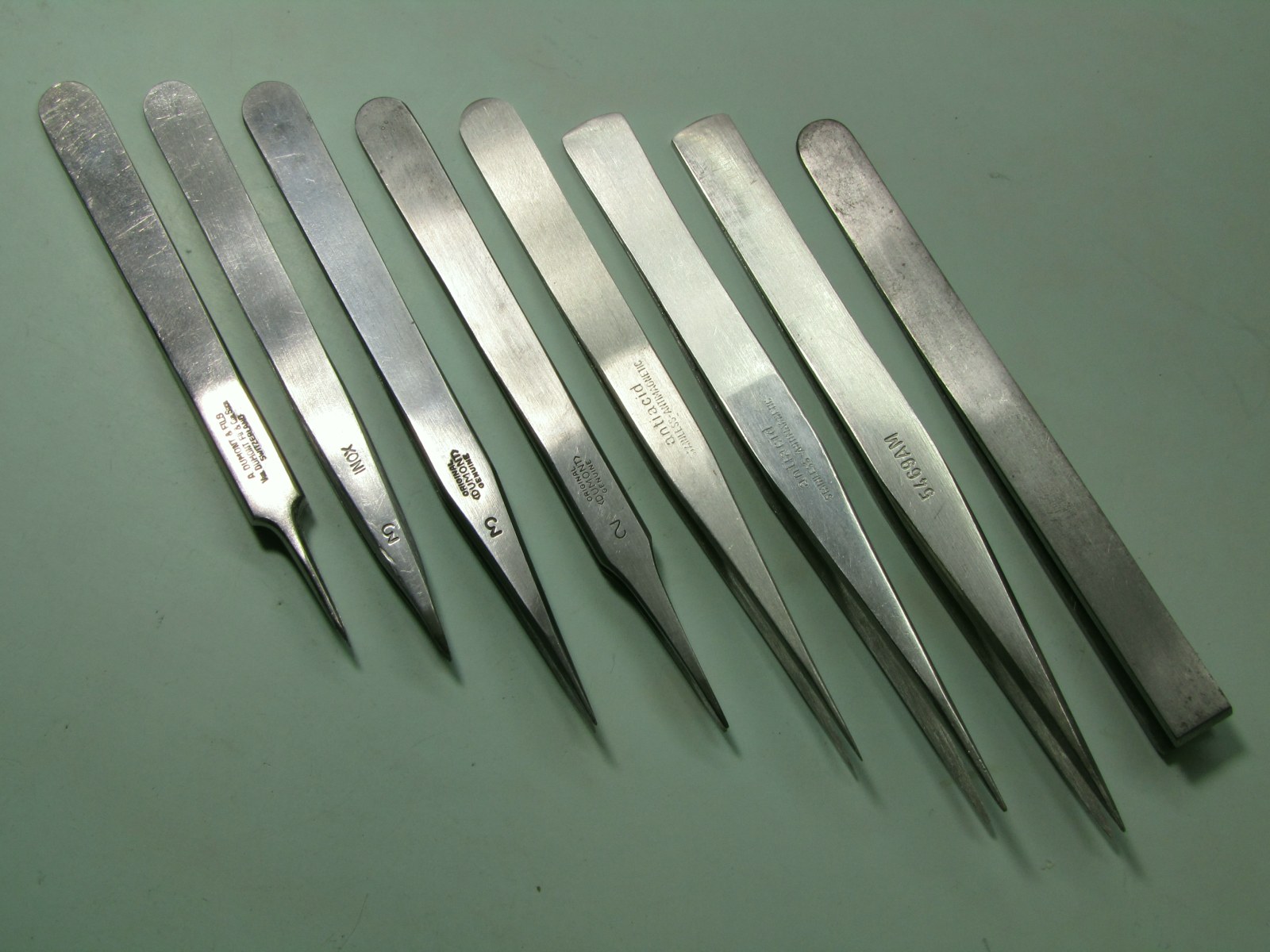
|
| top | |
| Poising Tool | |
| One of the most
important balance tools is the Poising Tool.
It is used to statically poise the balance wheel so that it will not have heavy or light points on its circumference when the staff is placed in horizontal plane. Image to the right shows an old brass poising tool with steel blades. |
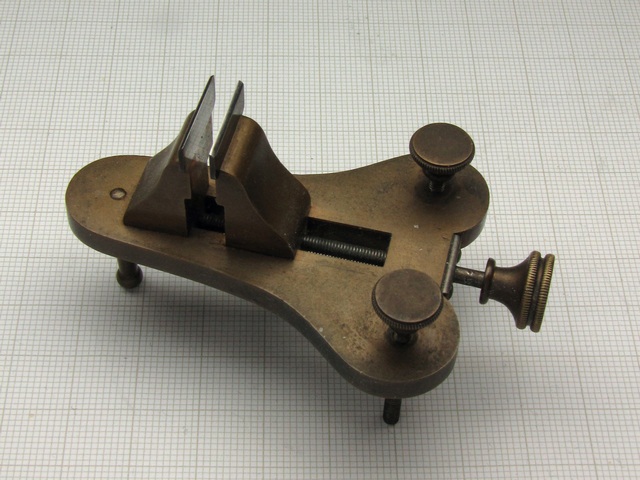 |
| Here shown poising tool is with protected ruby blades and a spirit level used for accurate setting of the tool in horizontal plane so that poising of the balance can be done under optimal conditions. | 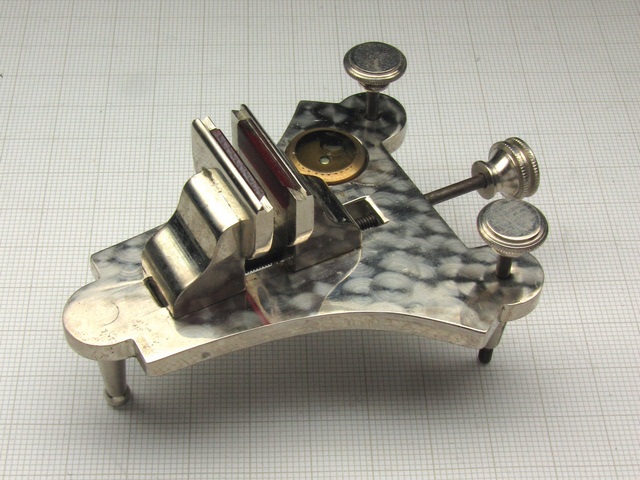 |
| top | |
| Balance spring collet removing tool | |
| This
is another shop made tool used for removal of balance spring by
lifting up the balance spring collet, by lever action, working from
underside. The lever was made from blue pivot wire 2.0 mm in diameter, grinding to shape using miniature diamond files and polished with diamond paste afterwards. When finished, I mounted it in an old dip oiler handle. The thickness of its blade tip is 0.15 mm as it is to be used on smaller calibres. |
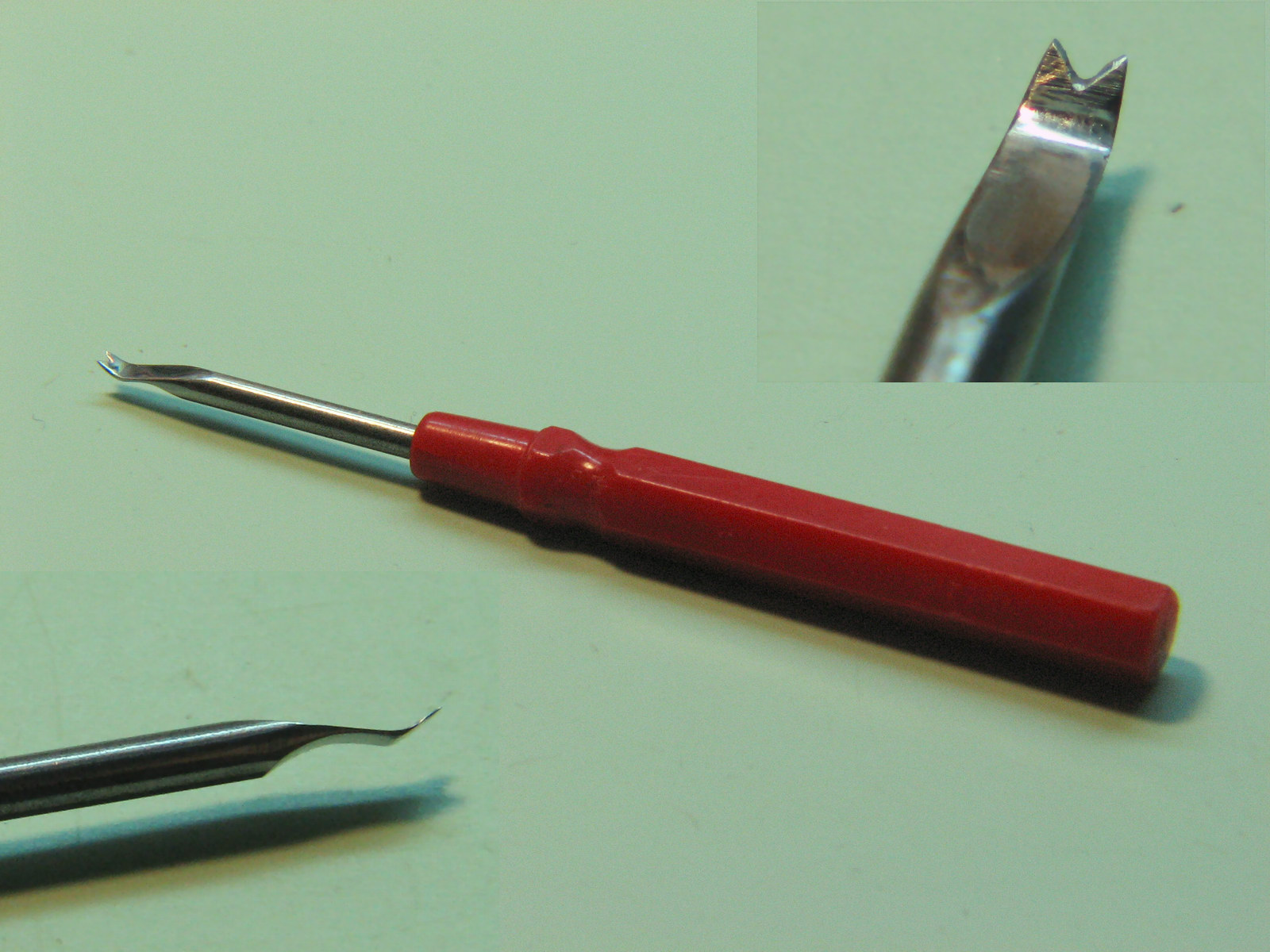
|
| top | |
| Roller remover tools | |
| The
K&D Roller remover tool. The set has three stumps and three punches so it will do all sizes of balances, from ladies to pocket watch. |
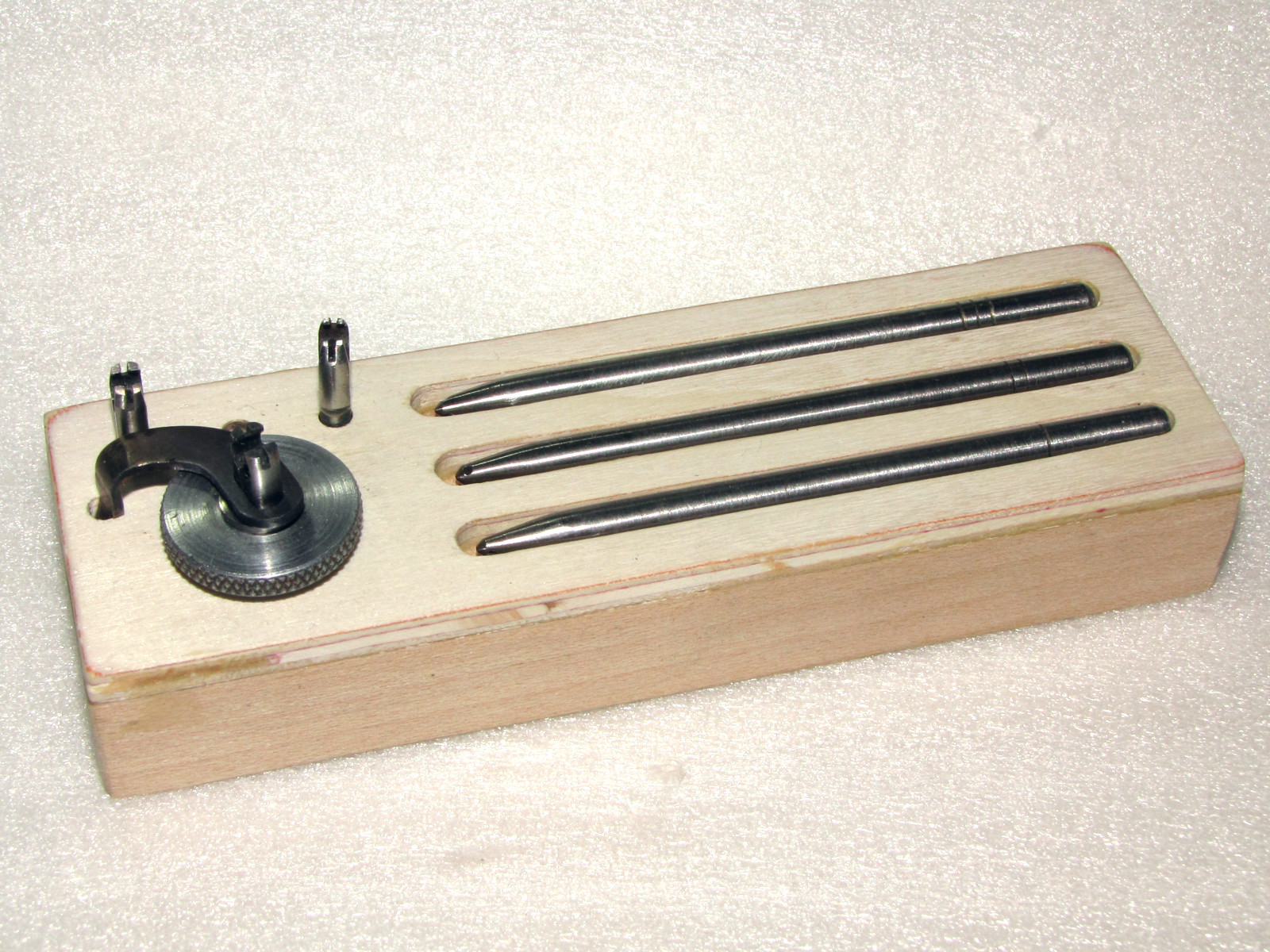
|
| The
tool is used in staking frame as shown on the image to the right. The stump opens and closes by turning the knurled piece CW or CCW. The roller is removed using one of the punches of suitable size to fit balance staff, then only a light punch with the hammer will do the job. |
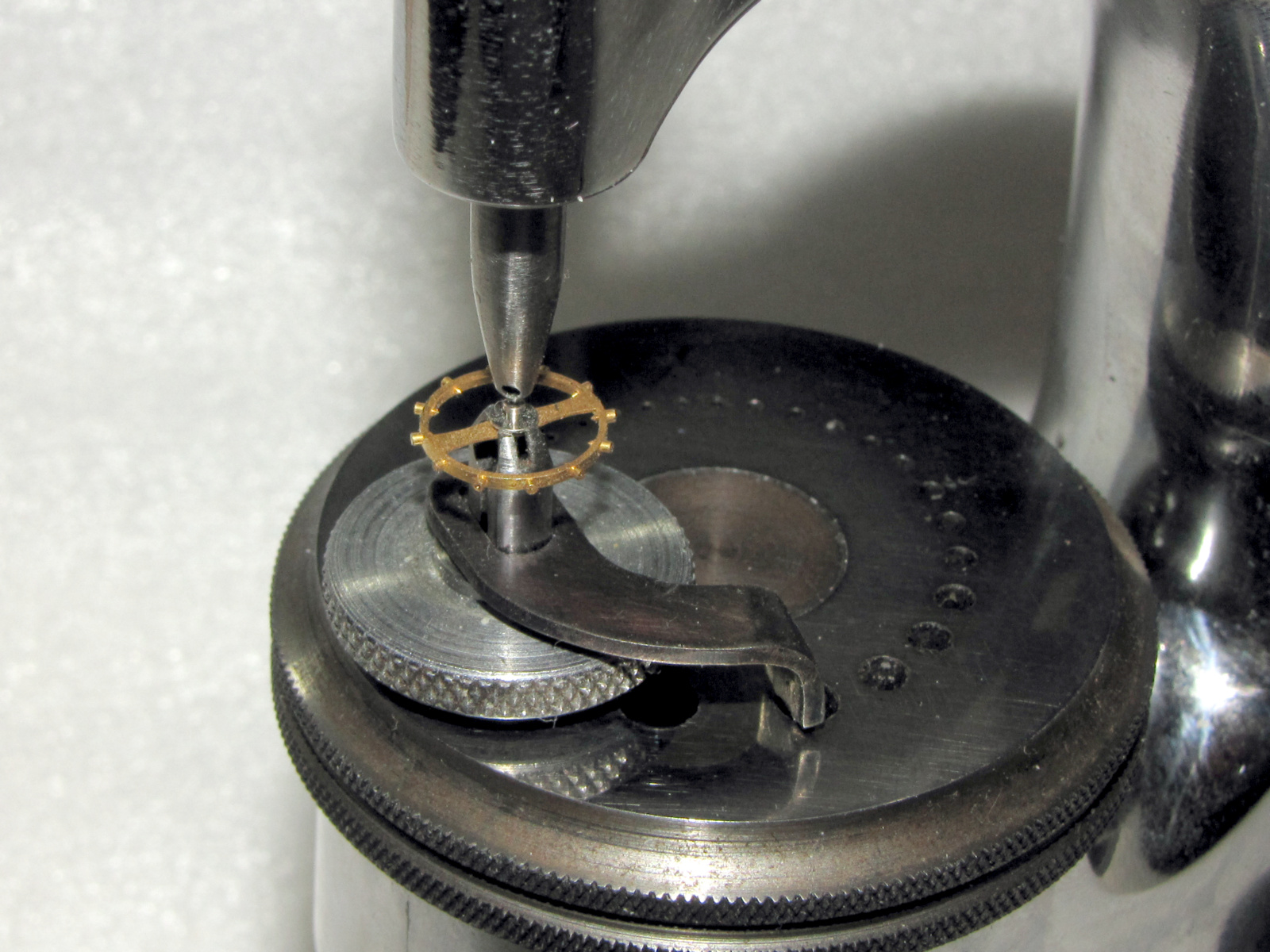
|
| Yet another style of roller remover, the "Rex Roller Remover" produced by H.G. Wilson, now defunct company. |
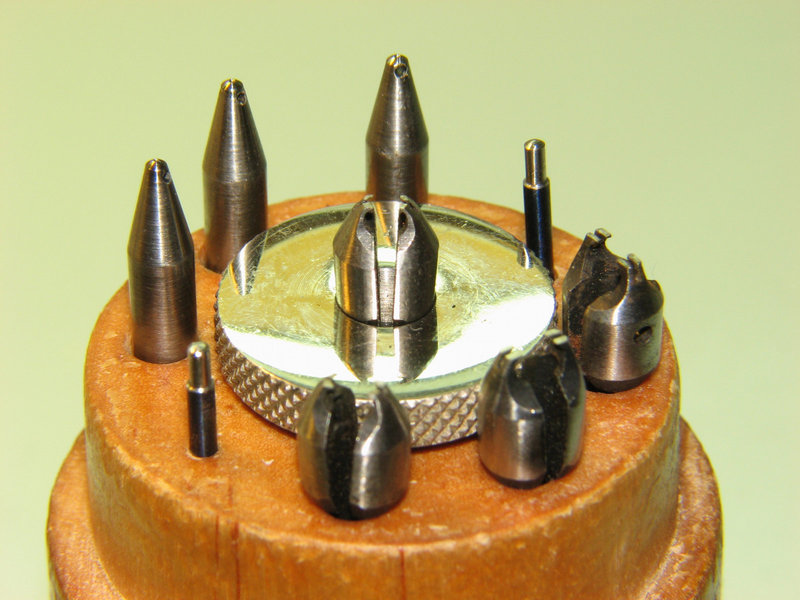
|
| Shown
here, is the use of Rex Roller remover in a staking frame, fitting the
4.70 mm (#12 Stub's Steel Wire Gauge) hole.
|
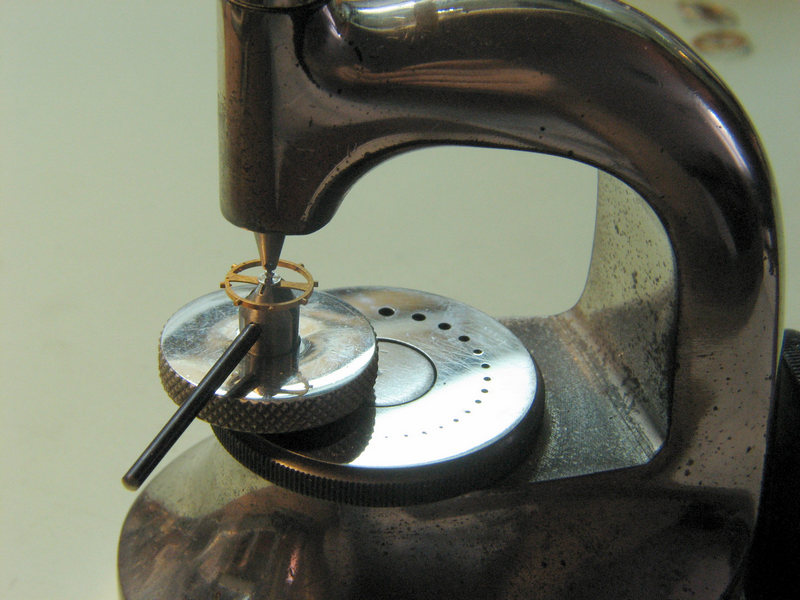
|
| Rex roller remover can also be used mounted in a steel bench block. |

|
| Description of all of the variations of the tool as it used to be supplied. |
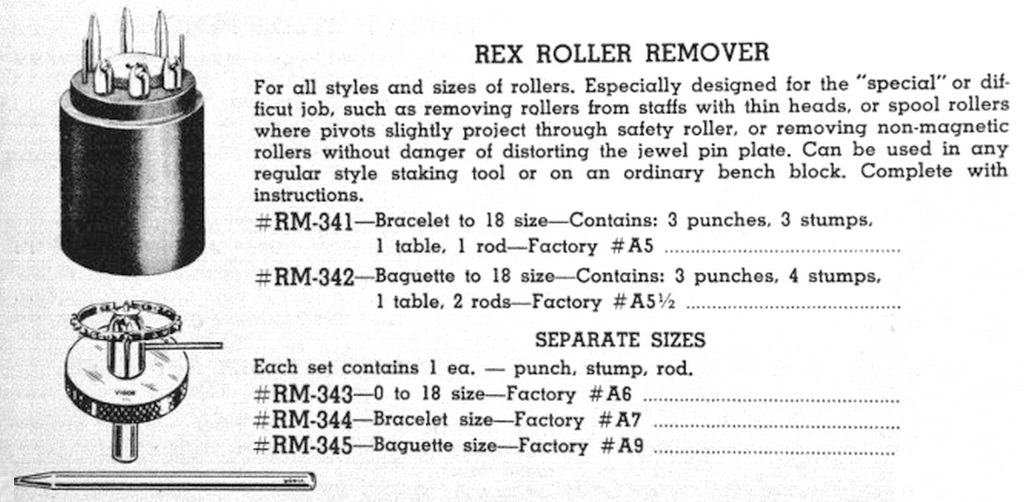
|
| Here
is another style of the roller remover tool. This one can remove
roller from a balance with more than two arms.
There are two pushers supplied with it, one for pivots sized up to 10/100 mm and other for pivots sized up to 20/100 mm. When not used, the second pusher is stored inside the body. |
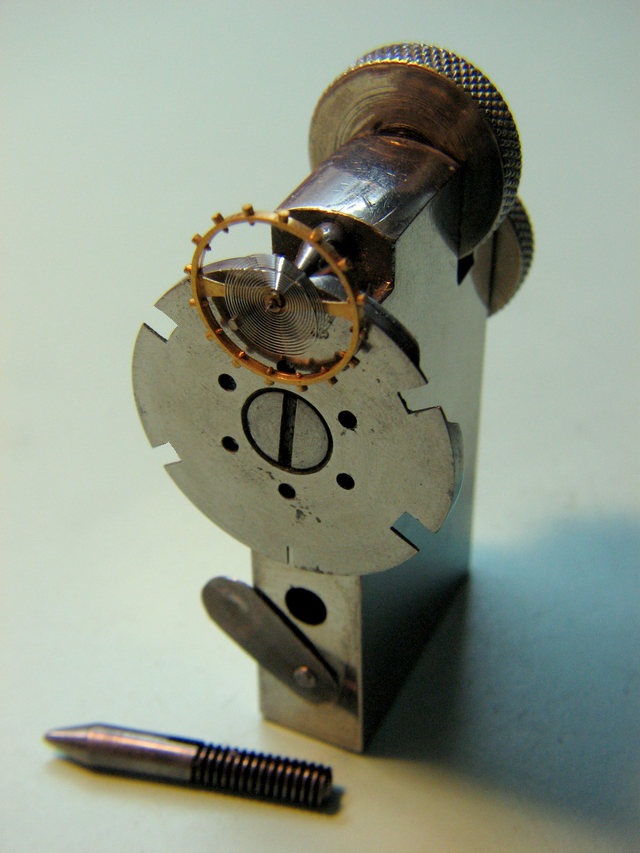
|
| Here is yet another roller remover tool by JHR, which can be used either as stand alone or in a staking tool. |

|
| For
use with the smaller size balance wheels, with more than two arms,
there is a Swiss made tool "Bradux".
One has to be careful when using it, as if the roller is mounted tightly, the balance staff can easily be snapped at hub. |
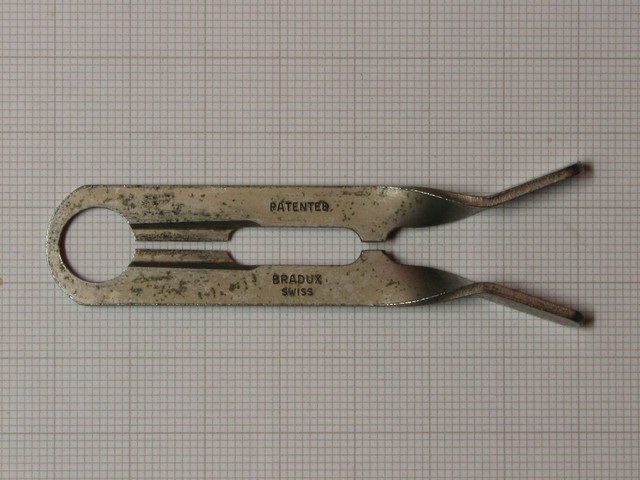
|
| top | |
| Molfres - The balance staff grinding tool | |
| One of the most often performed repairs is the replacement of the damaged balance staff. There are several ways of doing it, one by using a lathe to cut of the bottom part of the staff including the hub so that the staff can be removed in the staking tool without any damage to the balance wheel.
The fastest and by far the safest way of removing damaged staff is by grinding its bottom part all the way to the balance seat leaving only a tiny portion of the hub and then punch out the staff breaking off the thin remnant of the hub, thus leaving the balance unharmed. To do so one can use a small bench grinder, with special staking frame, specially designed for this particular purpose. |
|
| The image to the right shows Molfres, the small bench grinder. |
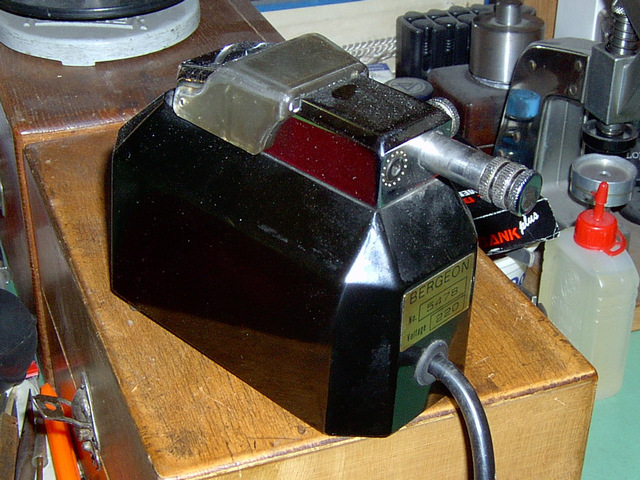
|
| The special staking tool frame used to drive out the remnant of the balance staff from the balance wheel, applying a very light tap with a hammer, without causing any damage to the balance wheel. |
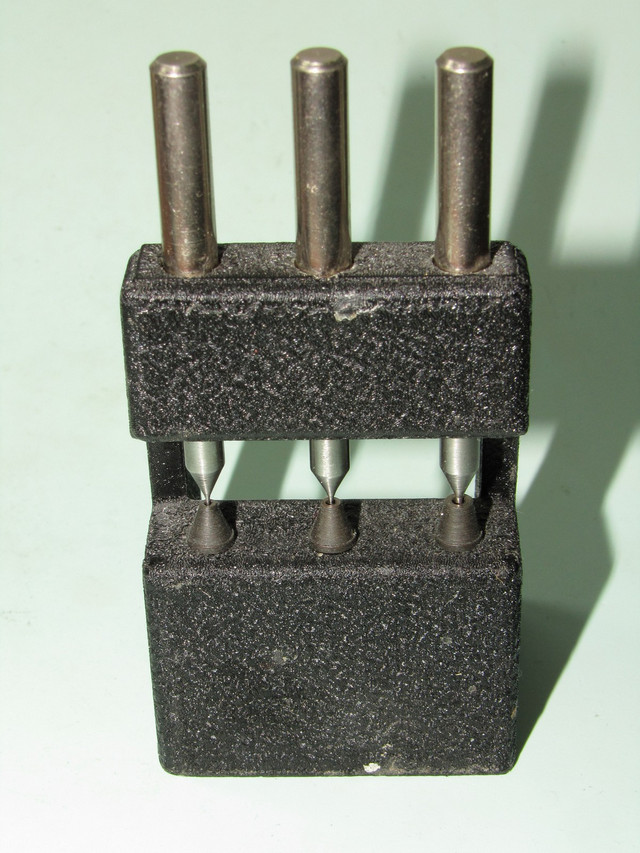
|
| Molfres with a balance wheel securely held in the collet, ready to grind the bottom part of staff away. |
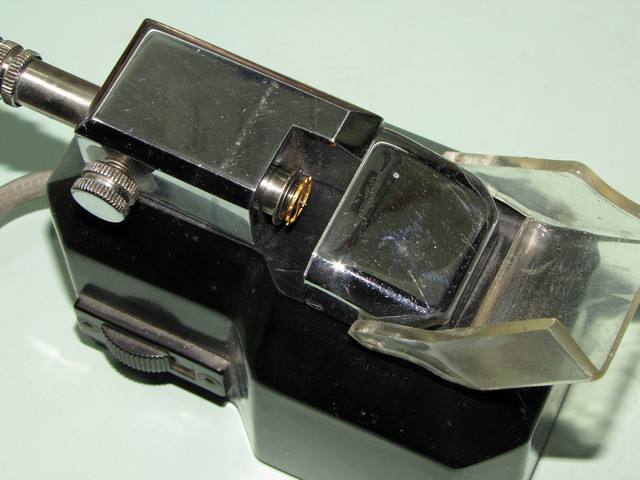
|
| Here, balance staff ready to be presented to the rotating carborundum wheel which shall quickly grind the staff away. |
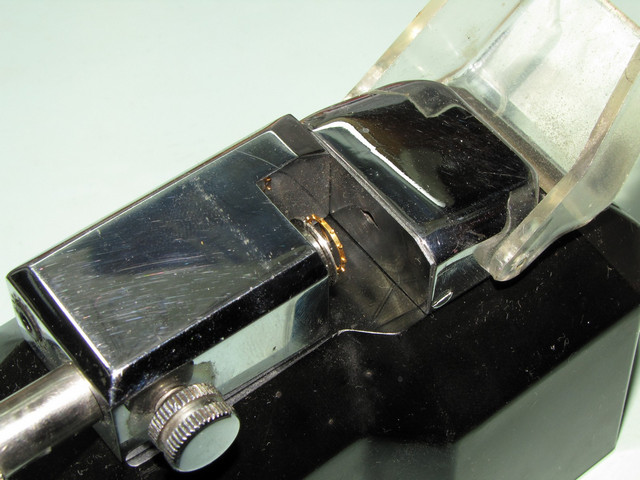
|
| Balance wheel with the remnant of the balance staff driven out and a tiny piece of the hub remaining. |
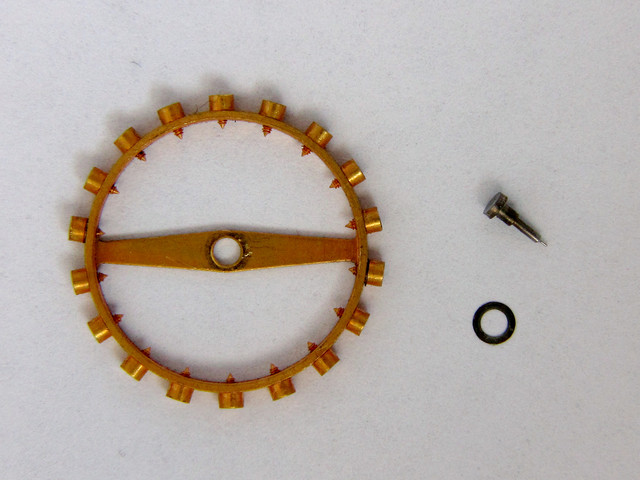
|
| Closer look at the balance staff remnant with the riveted part visible as a slight taper towards the now missing lower part, out of which remains only a thin ring of metal, part of the hub. |
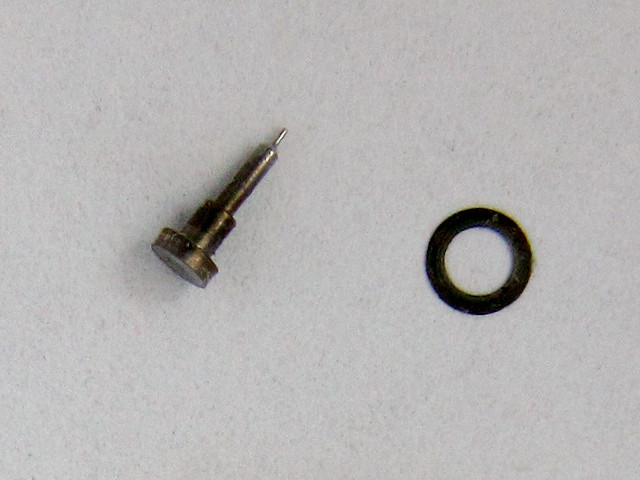
|
| Contrary
to a number of unsupported claims, Molfres grinder is thee safest way
of removing riveted balance staff, and as such, the use of this tool
is taught at the WOSTEP school, and at all of the associated courses.
The reason is simple. The grinding wheel distance from the balance wheel and the hub that is being ground, is adjustable and it cannot be extended over the fence, and balance wheel thus cannot be damaged by the Molfres grinder as it is protected by the fence. |
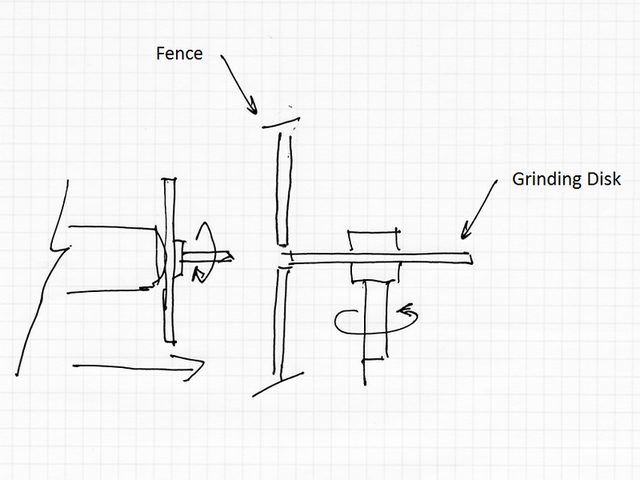
|
| Tools
like various K&D staff removers were designed for use with steel
balances, only.
As well as the tool that is distributed by Bergeon, by name of Platax, it is safe to use with the Glucydur and steel balances, only. Use with balances made of other, softer, materials will damage balance seat, without any doubt. Needless to stress the point, however, I do not condone use of the tools that can make balance wheel unusable. |
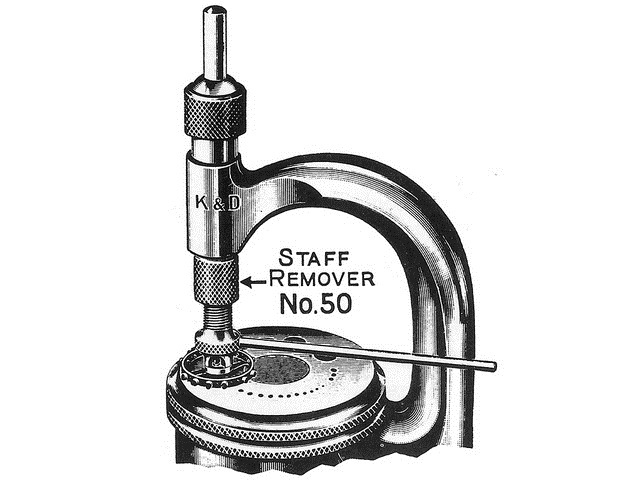
|
| top | |
| Jacot Lathe | |
| Favorite
brand Jacot Lathe
This Jacot lathe departs from traditional design in several respects. All of the runners are with removable lanterns, so if any gets worn, then they are easily replaced. One only needs to unscrew the old lantern and fit the replacement. |
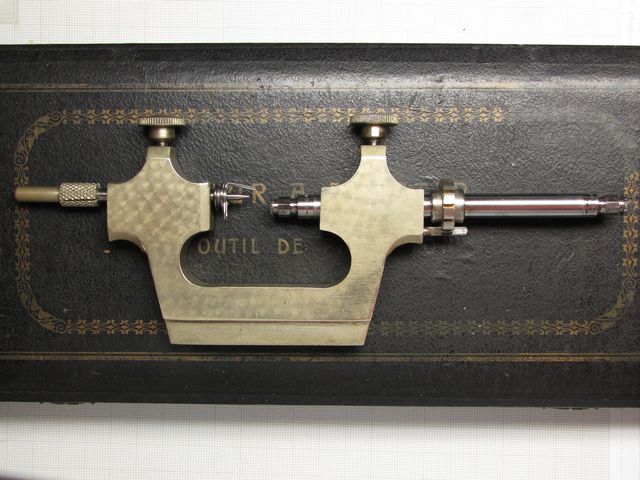
|
| other difference is in the design of the pulley, in combination with the pulley carrier runner. |
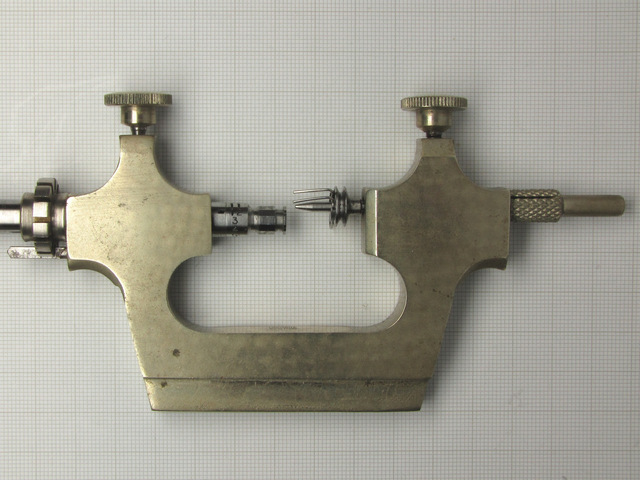
|
| Pulley
is positioned on the round spring that is slightly larger in diameter
than the runner, pulley is slid onto the spring free to rotate about
the runner.
But it cannot move along the length of the runner, being prevented by the friction between the spring and the the pulley. |
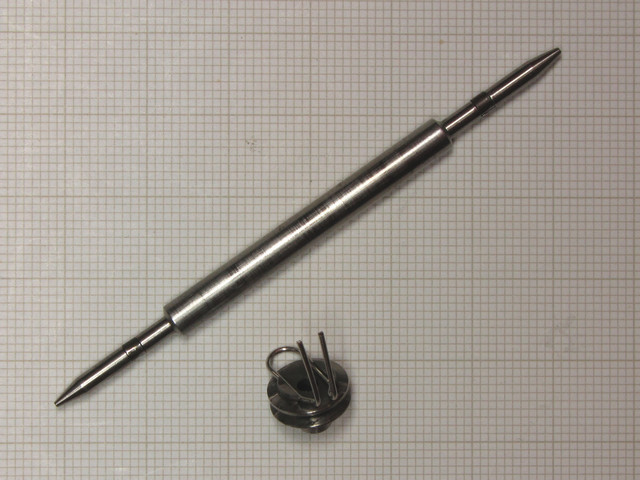
|
| Like
many other tools in a watchmaker's workshop Jacot Lathe is not the
only one.
This one is branded Georg Jacob, Leipzig, traditional design, but with replaceable lanterns. |
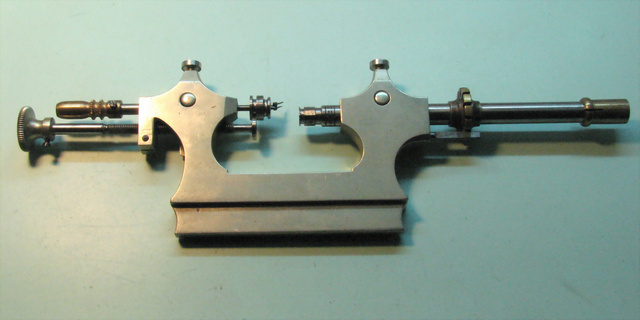
|
| Close up of a pulley and one lantern. |
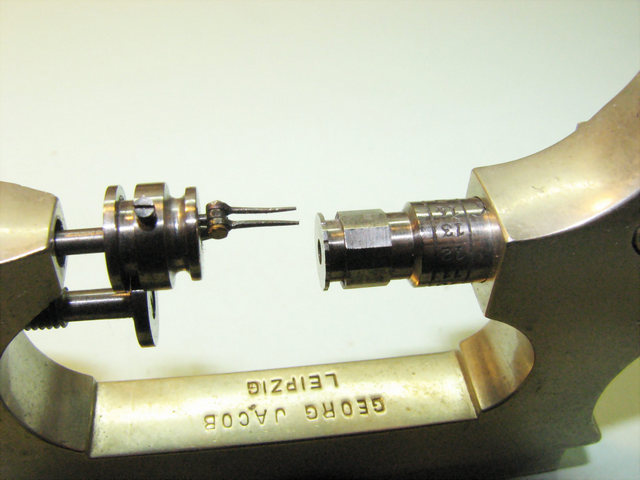
|
| One of the replaceable lanterns shown with a screw that holds it in position. |
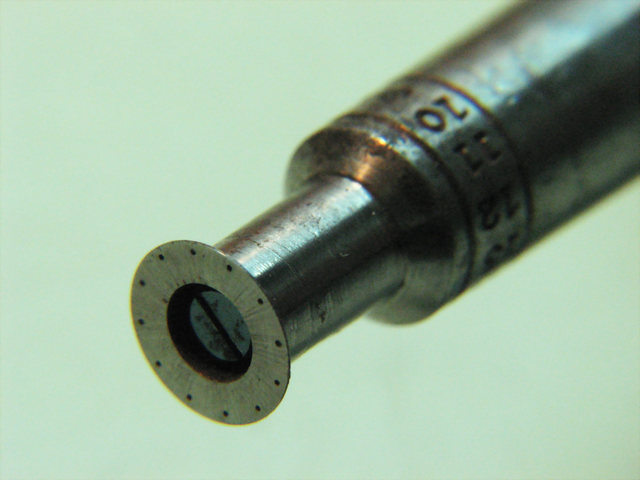
|
| top | |

|
|
|
Copyright � 2004, 2011, 2014, 2015, 2016 by Dushan Grujich. All rights reserved. |
|